Westward Ho
Virginia to Colorado
May 2023
Our route for this year’s westward journey began in the Shenandoah Valley of Virginia. Our first night out we stayed in Harrisonburg at Shenandoah Heritage Market, and then continued south on Interstate 81.
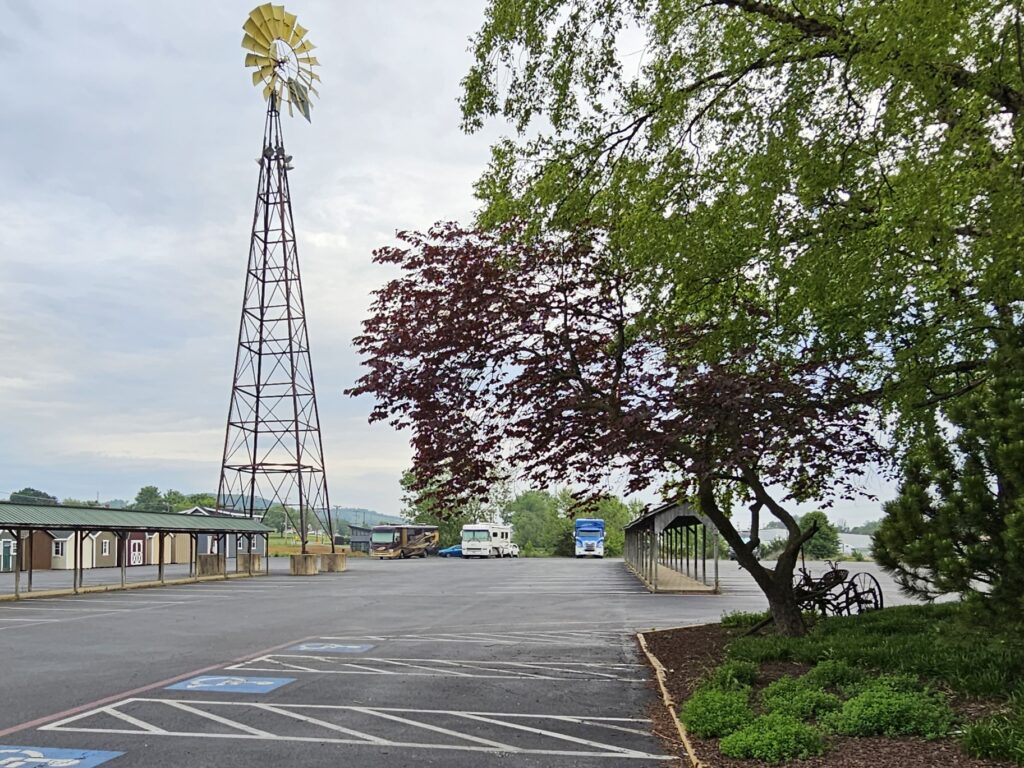
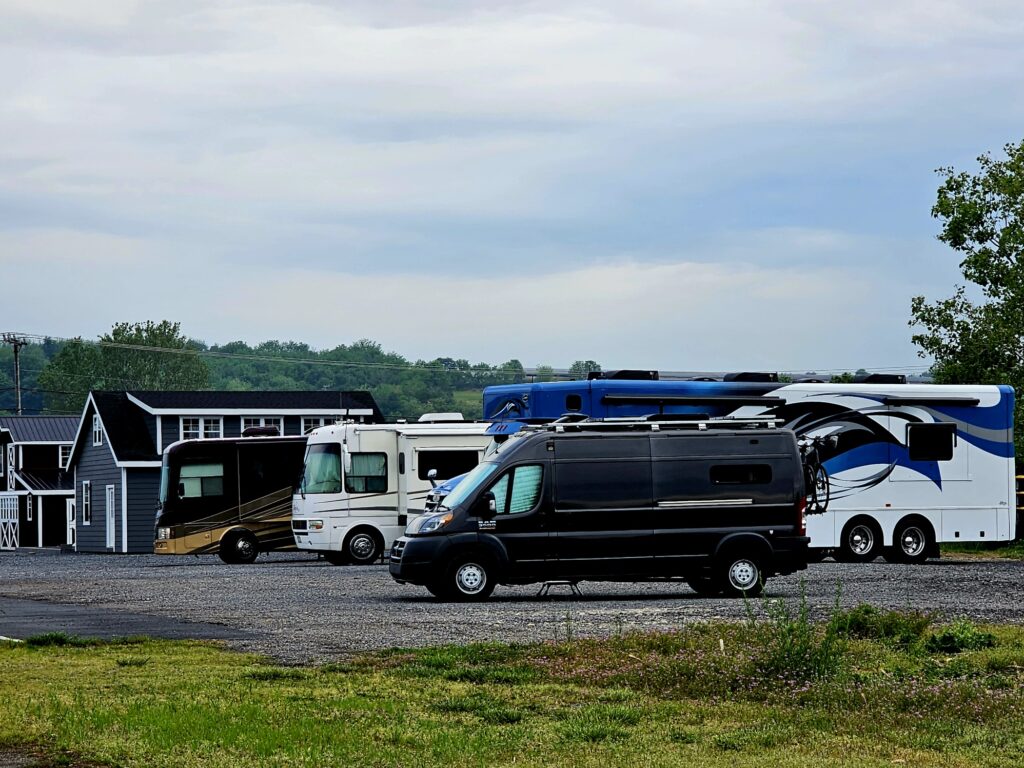
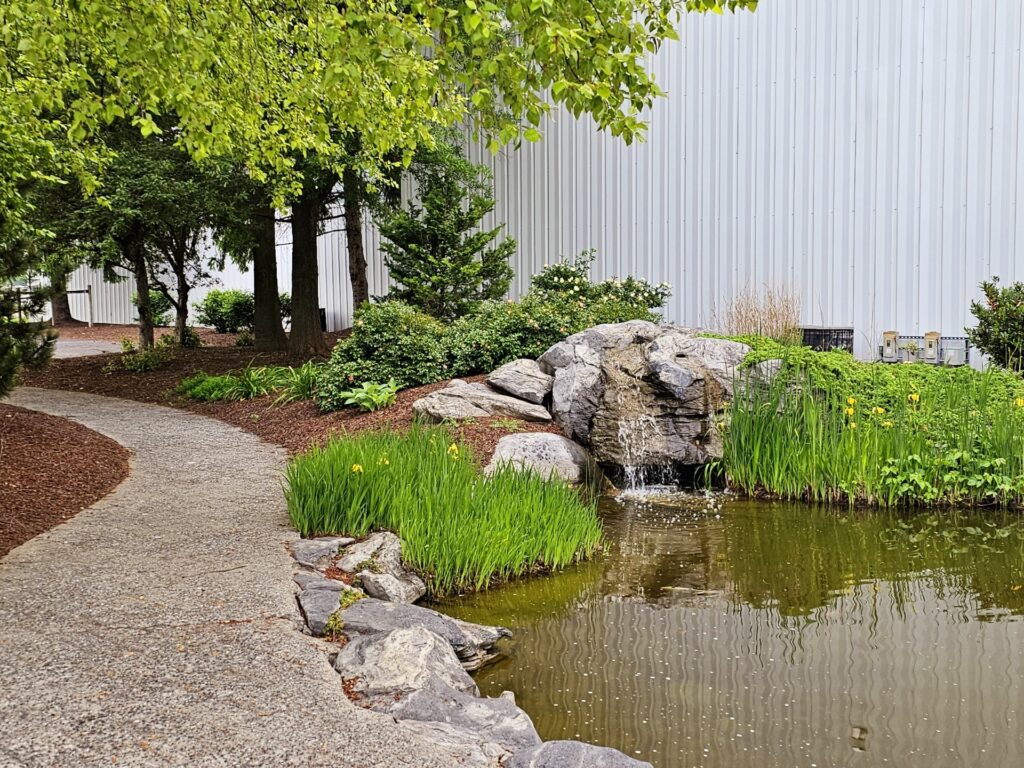
Near Knoxville, we picked up Interstate 40 and followed it through Tennessee, Arkansas, and the Texas panhandle, to Albuquerque, New Mexico. From there, we went north into Colorado. Although this route was almost beeline direct, and mostly interstate, we tried to sample the local culture, visit significant sites and take in the springtime beauty of stops along the way. Here are some of the highlights:
Hungry Mother State Park, Marion, Virginia
A chance to feel good about being back on the road again. We camped near a lively creek and hiked a lakeside trail.
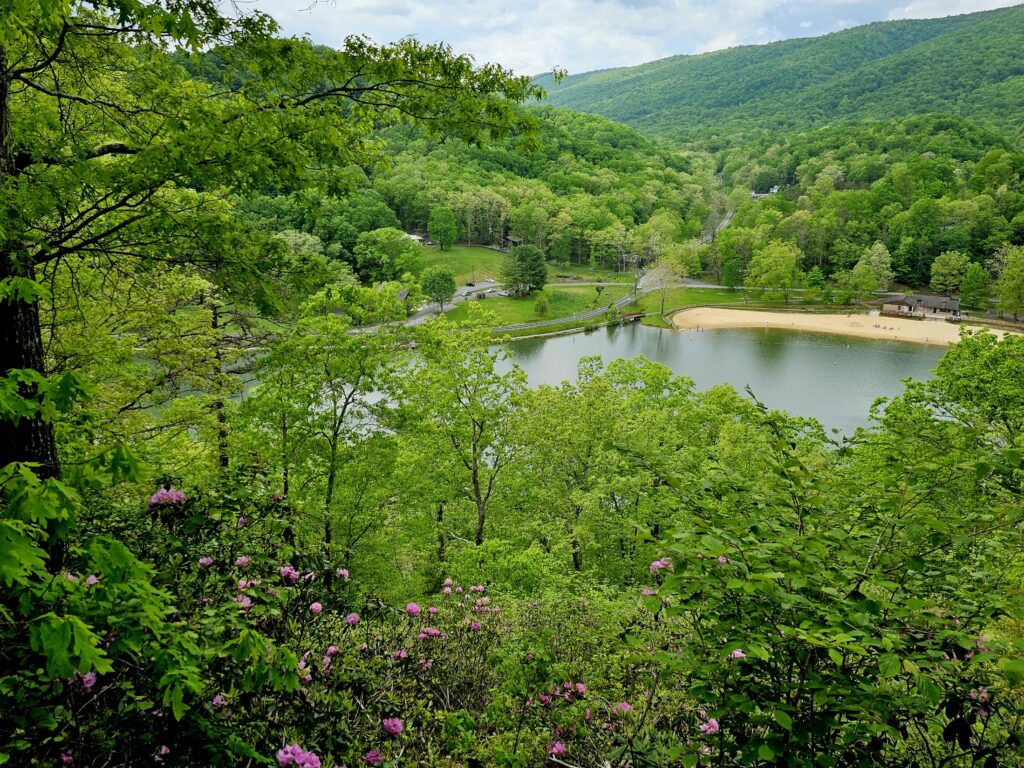
Our timing was right to see native rhododendron in bloom.
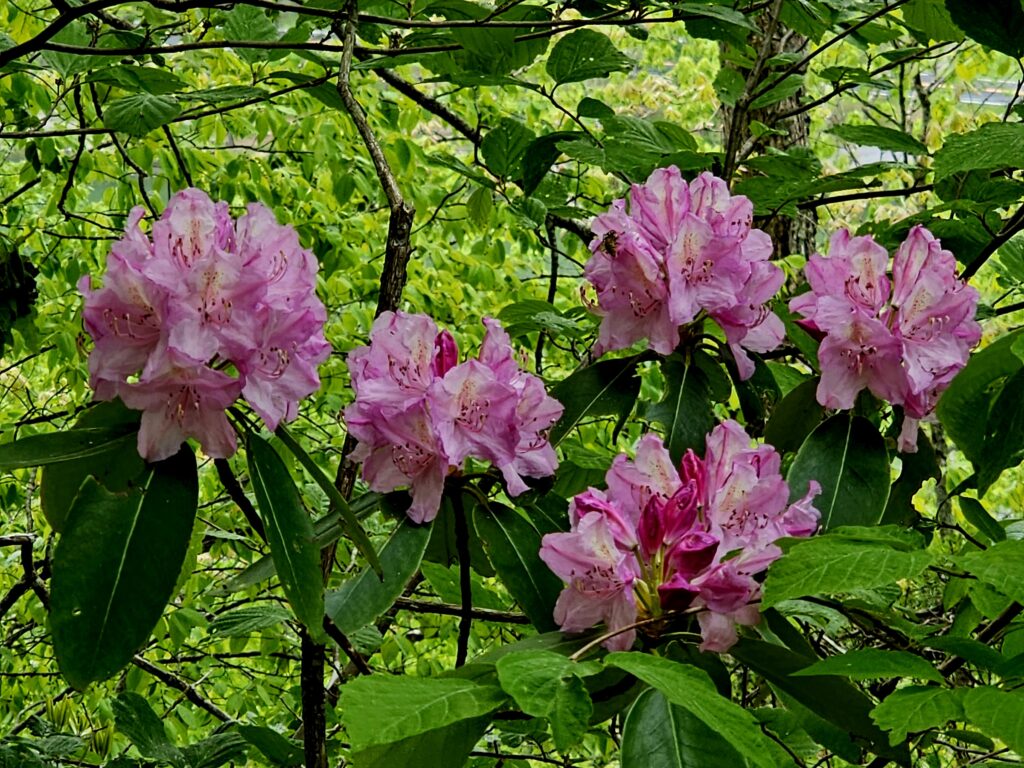
We also spotted several scarlet tanagers, a first for us.
Cumberland Mountain State Park, Crossville, Tennessee
Crossville is in between Knoxville and Nashville on the heavily wooded Cumberland Plateau. We loved this park. We hiked the Pioneer Trail along the river, and enjoyed a woodland full of mountain laurel in bloom.
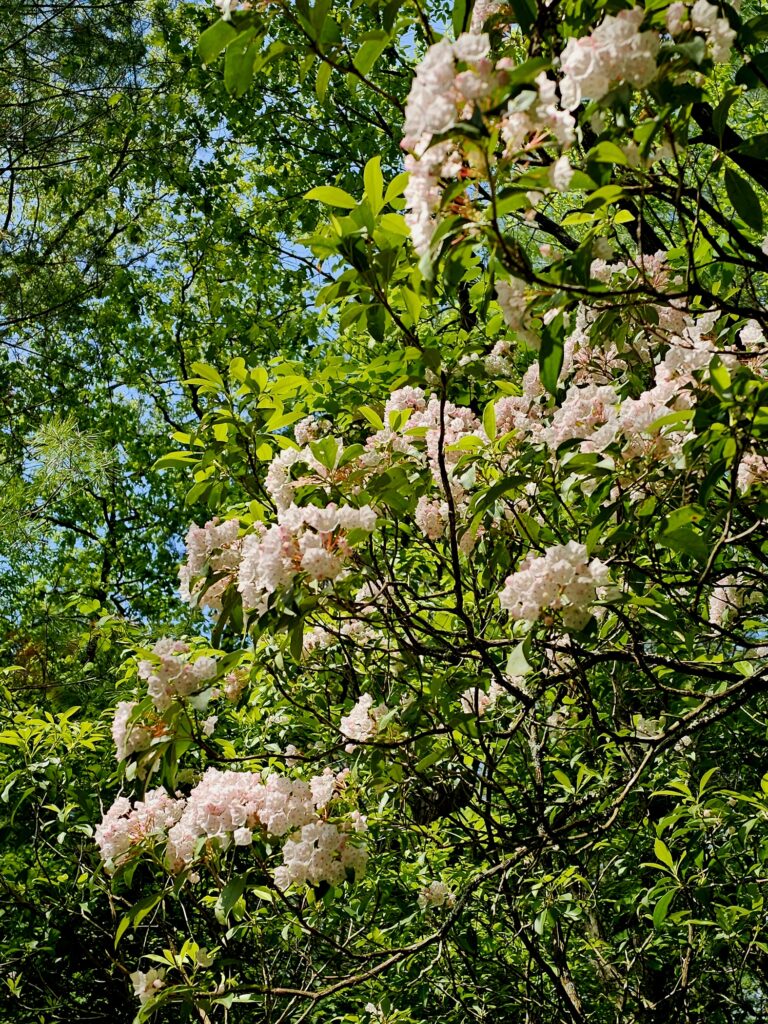
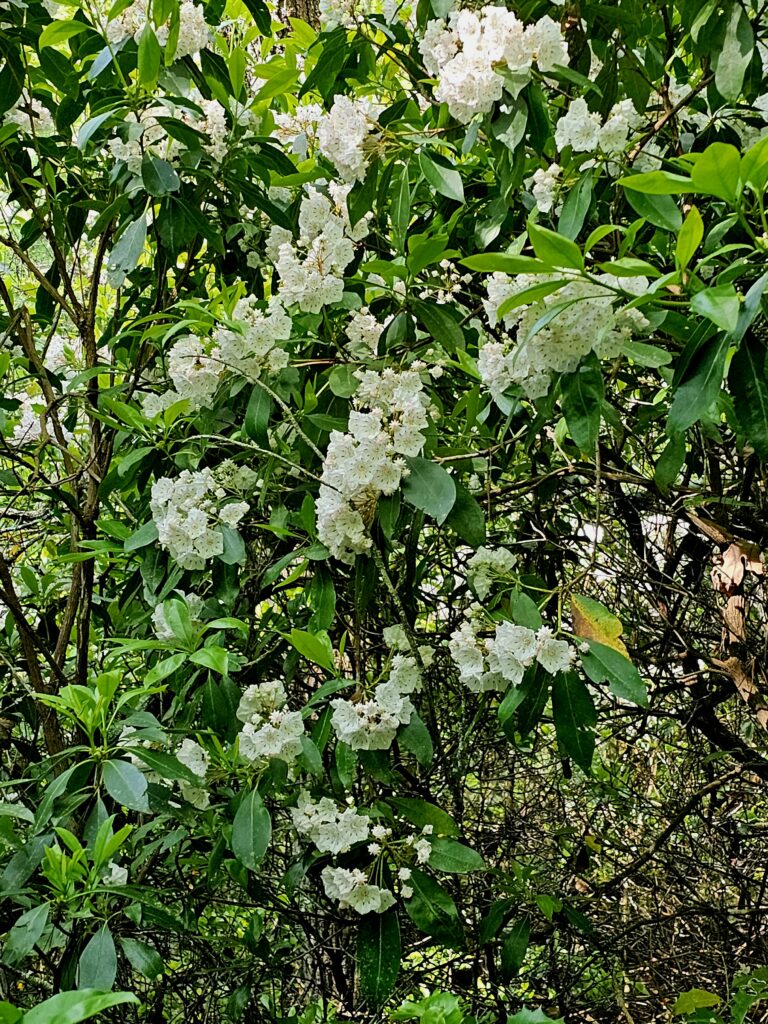
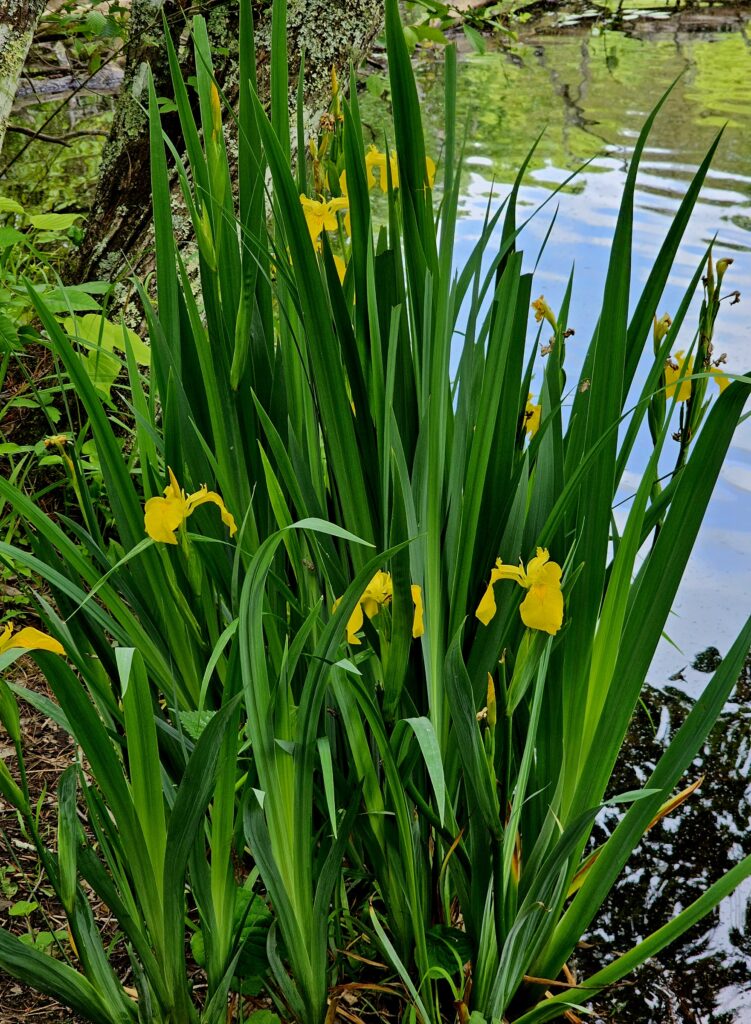
Memphis, Tennessee
We drove into Memphis on a Tuesday afternoon, which may have been why it was so quiet.
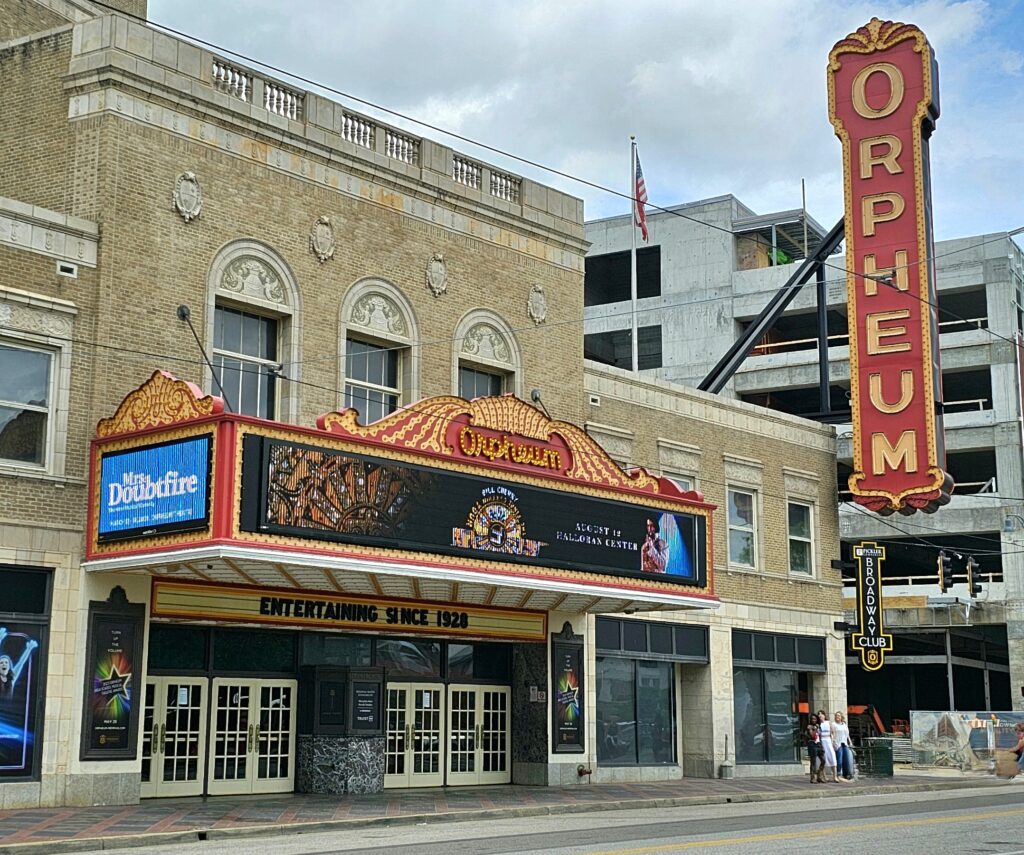
We strolled down Beale Street, the main drag, and took in familiar tourist spots.
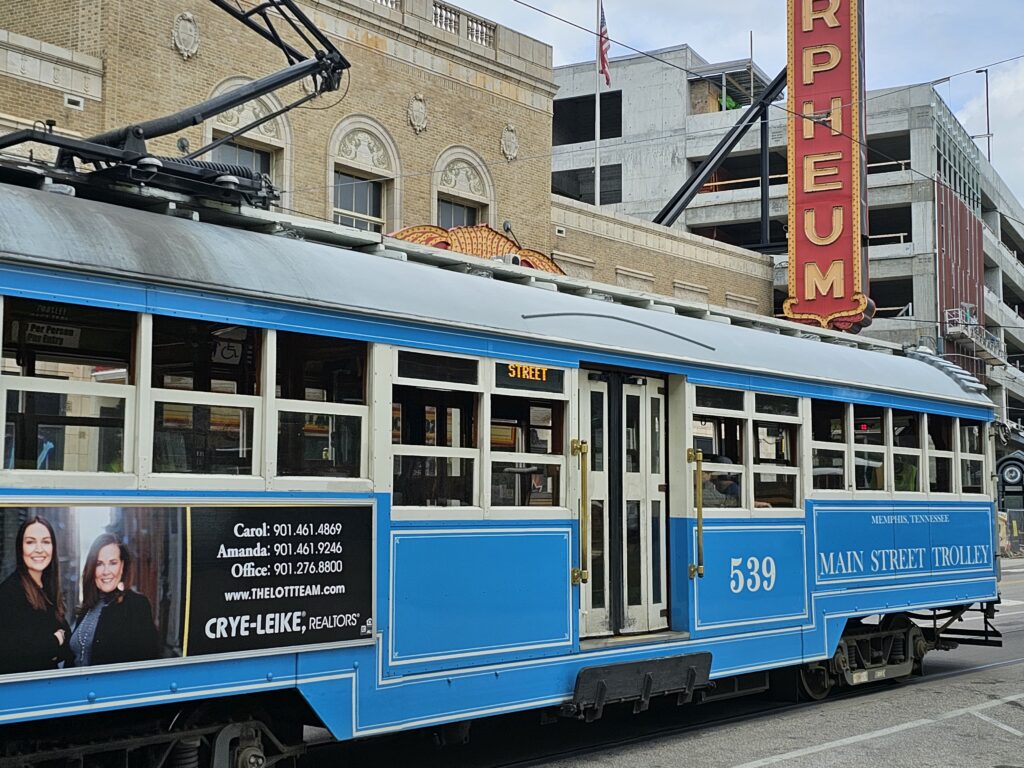
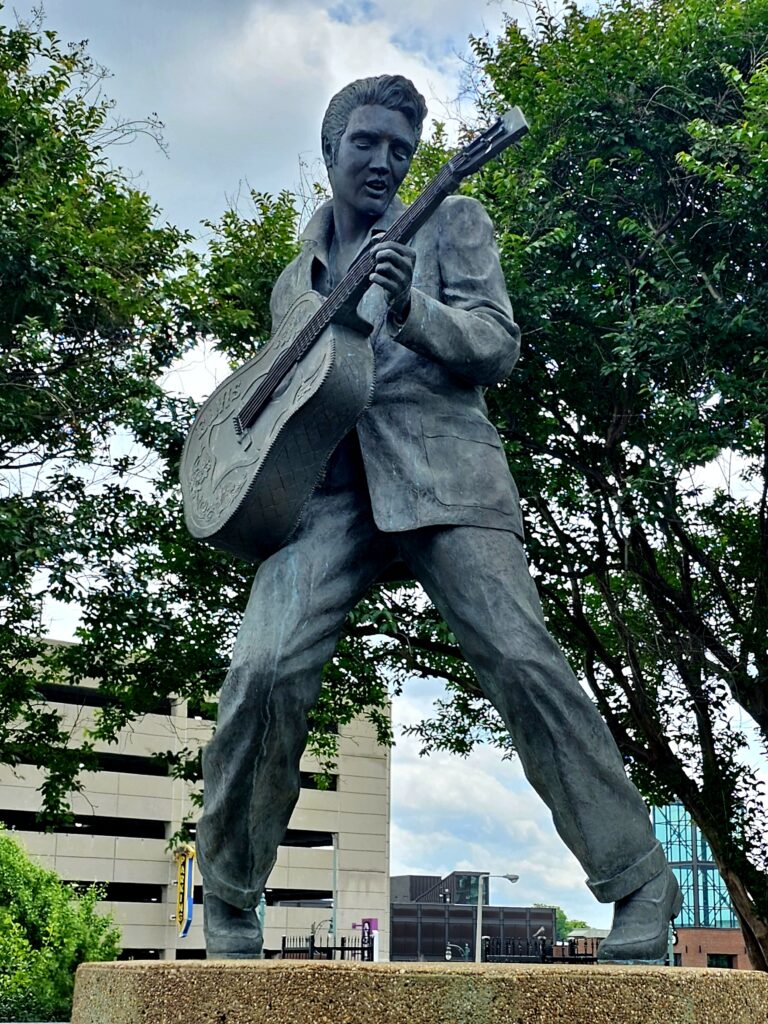
I’m sure the atmosphere on Friday and Saturday nights is much different.
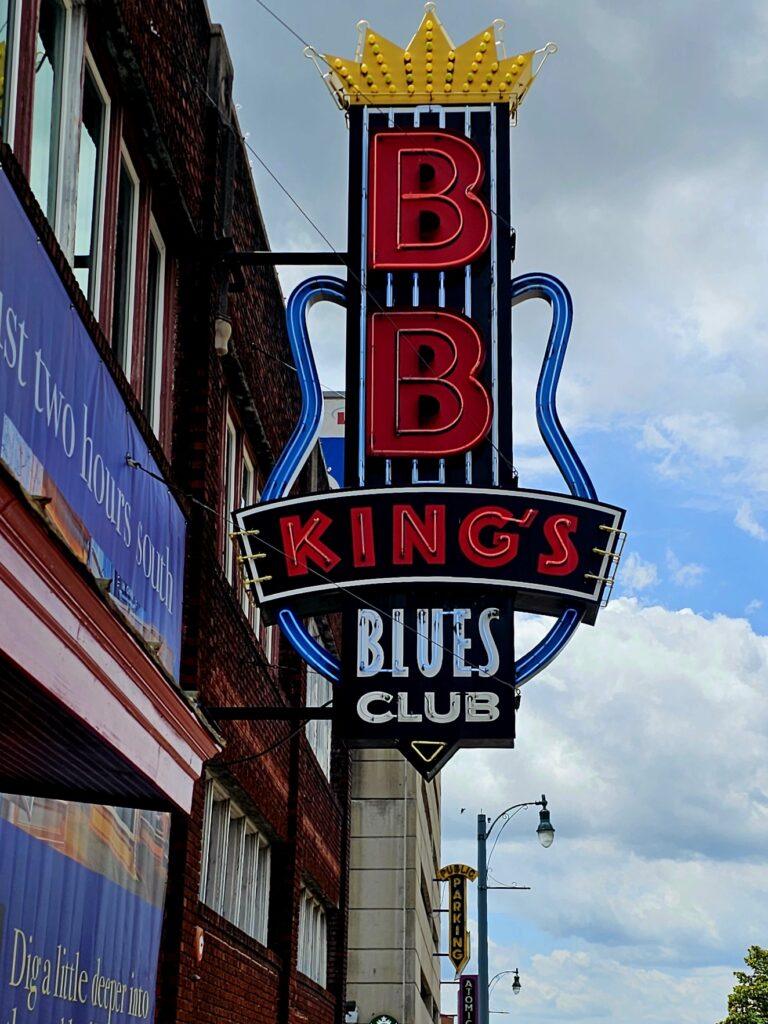
The Lorraine Motel
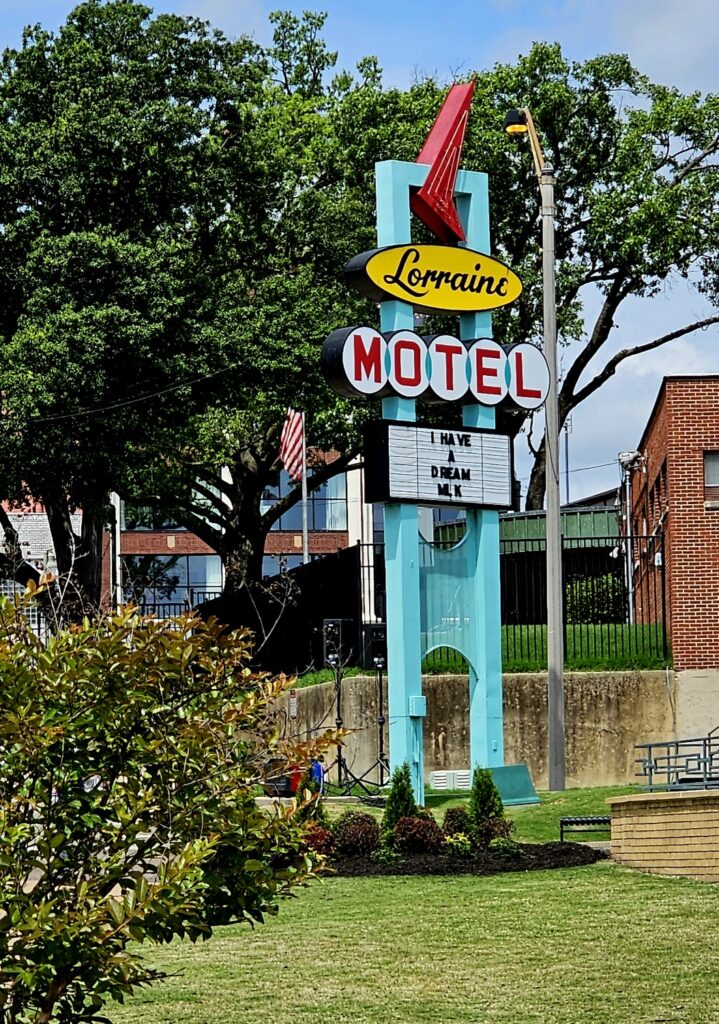
A few blocks away, we visited the Lorraine Motel, the site where Martin Luther King, Jr. was shot by a sniper on April 4, 1968.
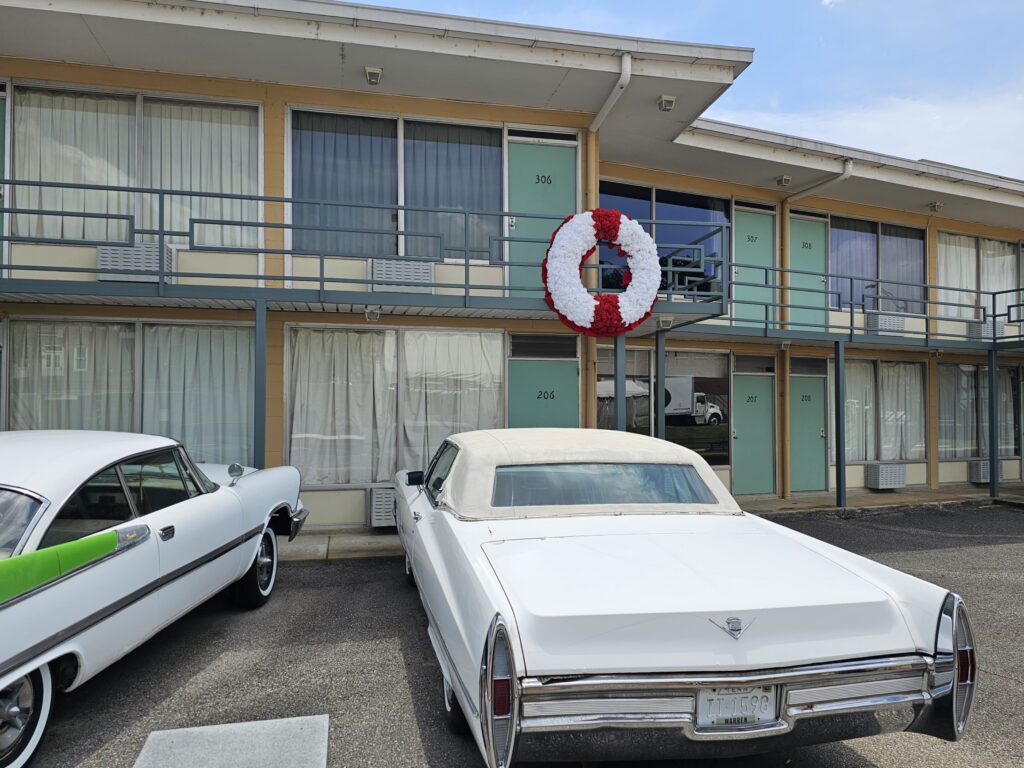
Memphis was still segregated in 1968. The Lorraine Motel was one of several that were for blacks only. Reports say that King had a premonition that his end was near. He died so young – only in his 30s. His death was such a loss.
The motel has been preserved and looks as it did then. It is now flanked by the National Civil Rights Museum.
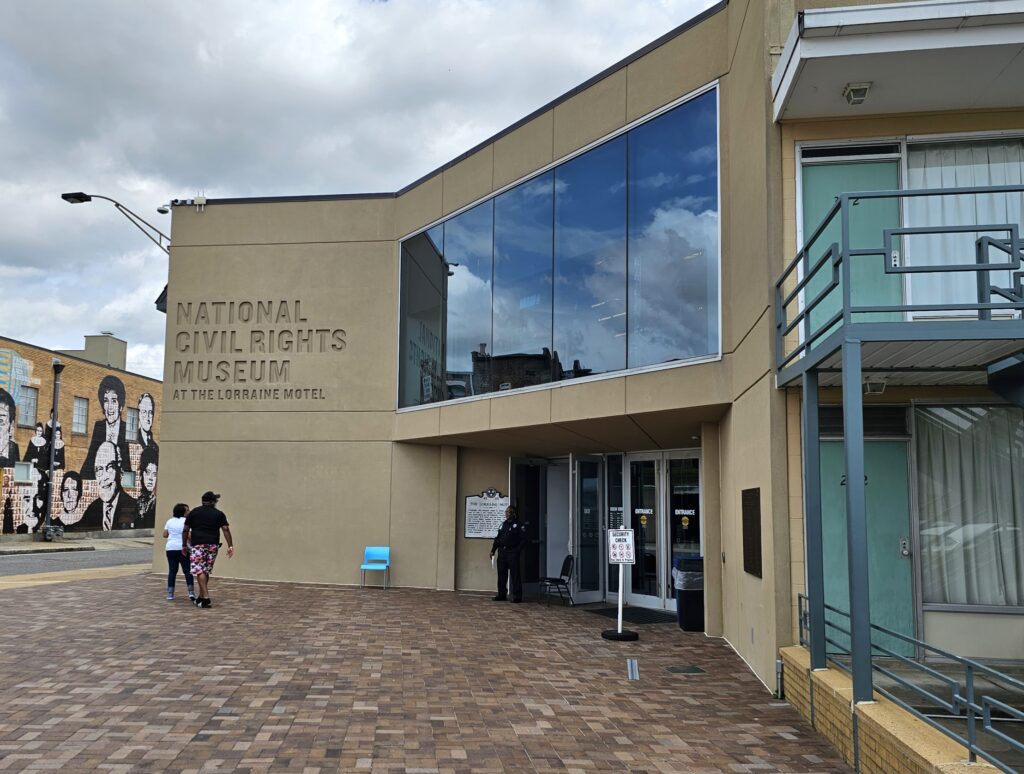
Unfortunately, the museum is closed Tuesdays, so we will have to go inside on another visit. We walked the neighborhood, which feels like another place in time. Cafes, coffee shops, and clubs much as they were. Old architecture and early neon, also as they were then.
I was a high school senior in 1968. The deaths of Martin Luther KIng, Jr. and, shortly thereafter, Robert Kennedy, were sea change moments for me.
Arkansas
Our drive across Arkansas was a quiet blur. We stayed at two state parks – Village Creek and Lake Dardanelle. Village Creek was very green, but almost deserted, and made even quieter by the fact that the park had zero cell service.
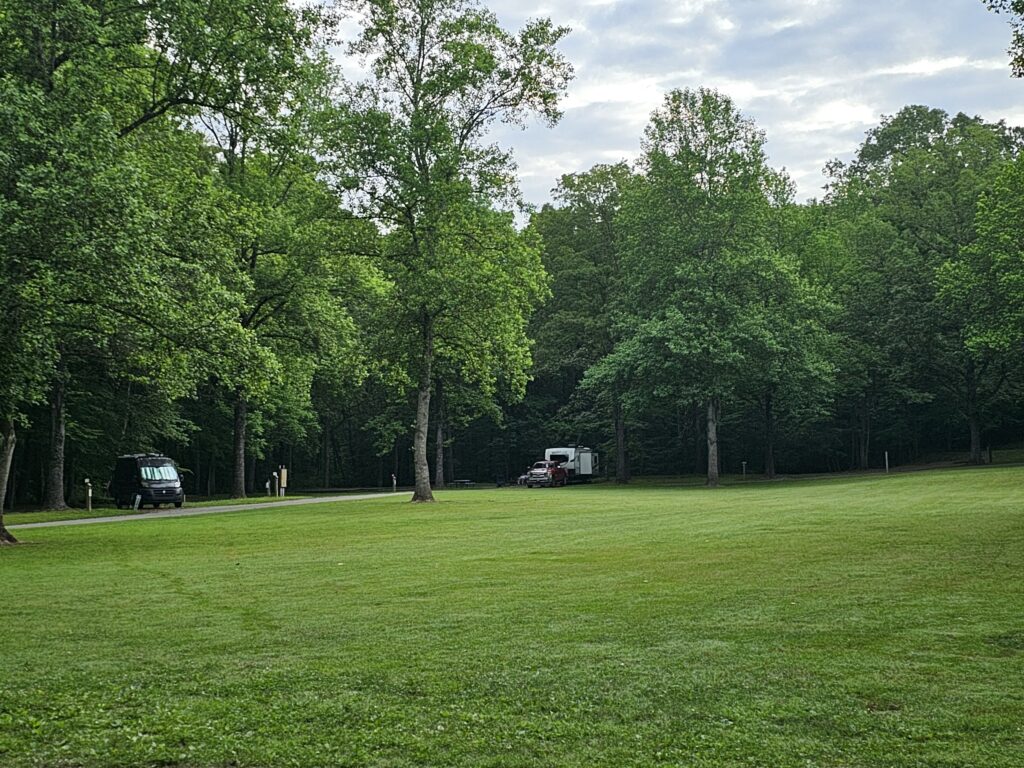
Lake Dardanelle was busier – the lake being the big attraction. We walked the lakeside trail at sunset. Local folks were busy with picnics and get togethers.
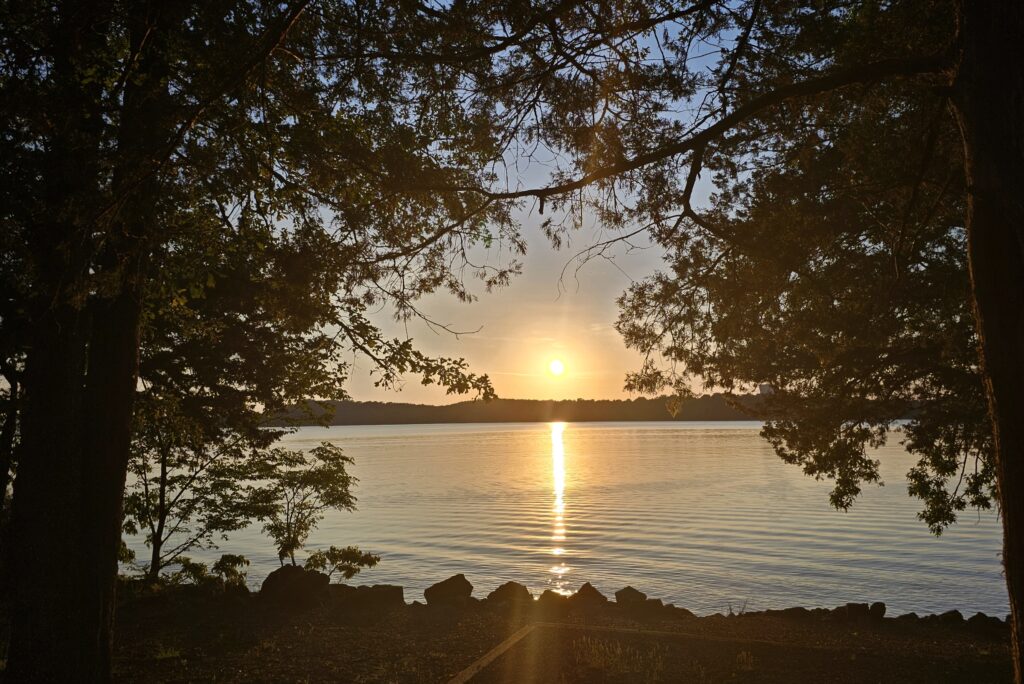
The park is in a dry county (yes, dry counties still exist!)
Oklahoma City
As members of Harvest Hosts, we spent the night at Anthem Brewery in Oklahoma City. It’s located in an industrial area near Route 40, yet close to downtown.
We visited the Oklahoma City National Memorial Museum, at the site of the Murrah Federal Building, which was bombed in 1995.

The Memorial and the Museum are extremely well-done and very powerful.
The Memorial is beautiful in its simplicity. It is a lawn of 168 empty chairs next to a reflecting pool. One chair for each of the lives lost. Nineteen of those were children, the youngest was one month old.
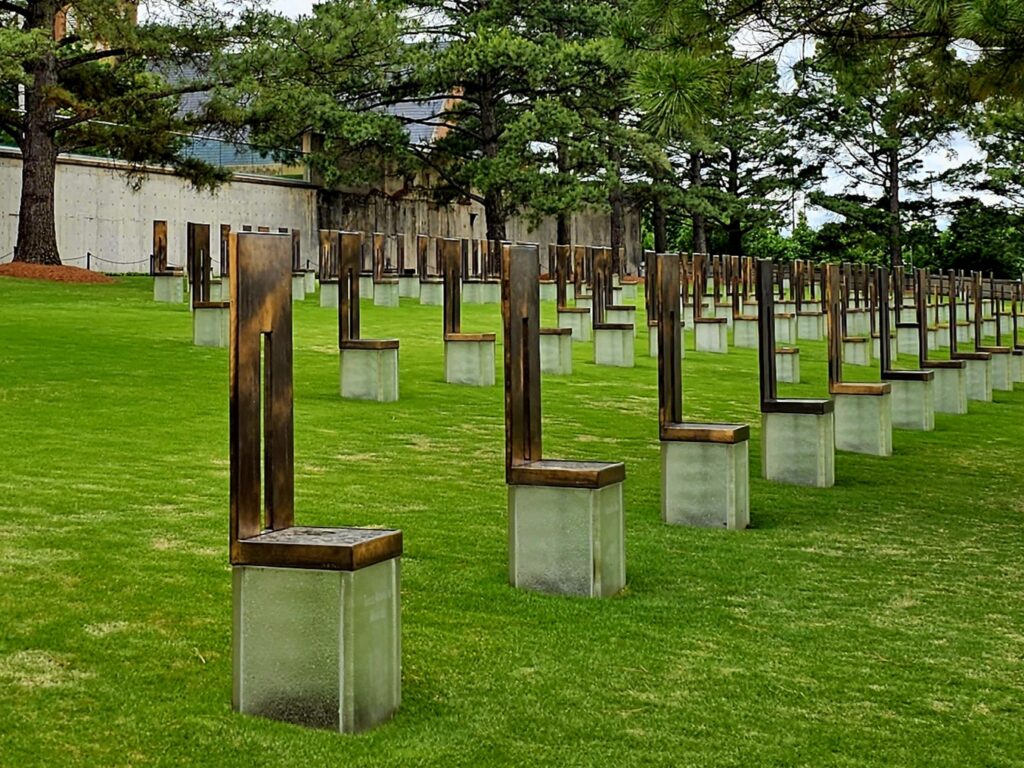
The Museum tells of the courage of the first responders, survivors of the attack, and unbreakable spirit of the citizens of Oklahoma City. There are so many stories told here. Visiting is an emotional and inspiring experience.
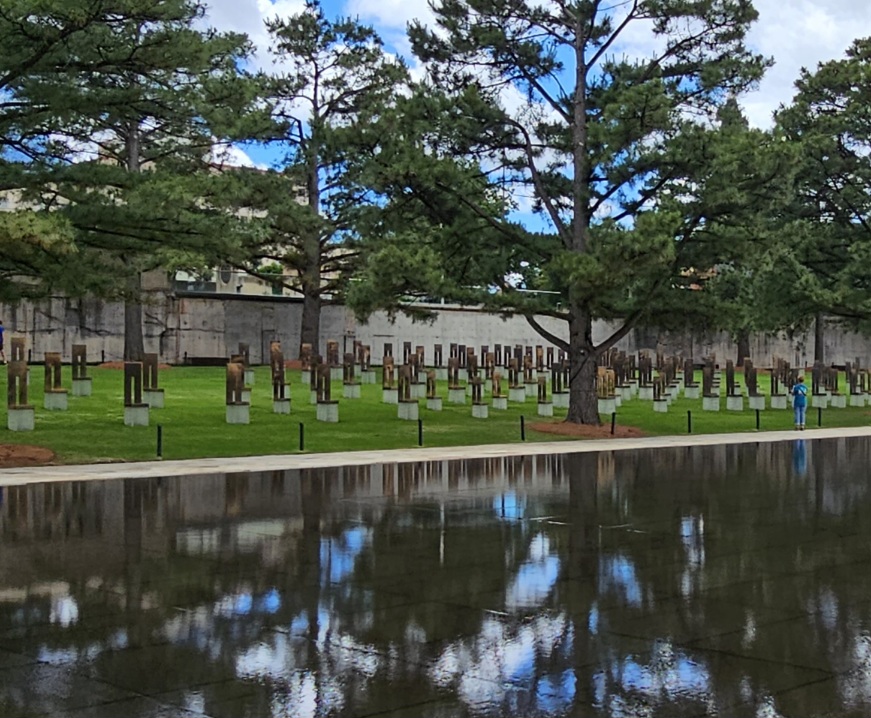
This is an excellent museum. If you are ever close, you must visit. It tells a story that still resonates today.
After our museum visit, we found a neighborhood eatery for a quiet meal. We had a lovely dinner at a little Italian restaurant called “Stella” and enjoyed chatting with our young server. He was very enthusiastic about his adopted hometown.
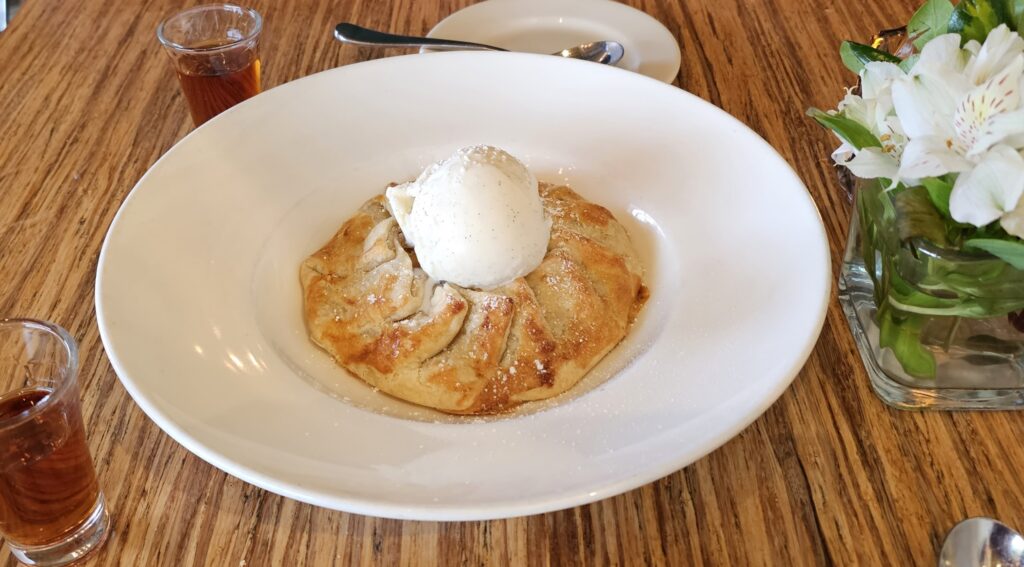
The city considers itself “the crossroads of America.” We liked the eclectic mix of architecture and the vibe of the neighborhoods we visited. Wouldn’t mind coming back for a deeper dive into the art and culture scene here.
Albuquerque, New Mexico
For this visit to Albuquerque, we decided to get a bird’s eye view of the area. The Sandia Peak Tramway glides up 2.7 miles over the crest of the Sandia mountains, stopping at 10,378 feet.
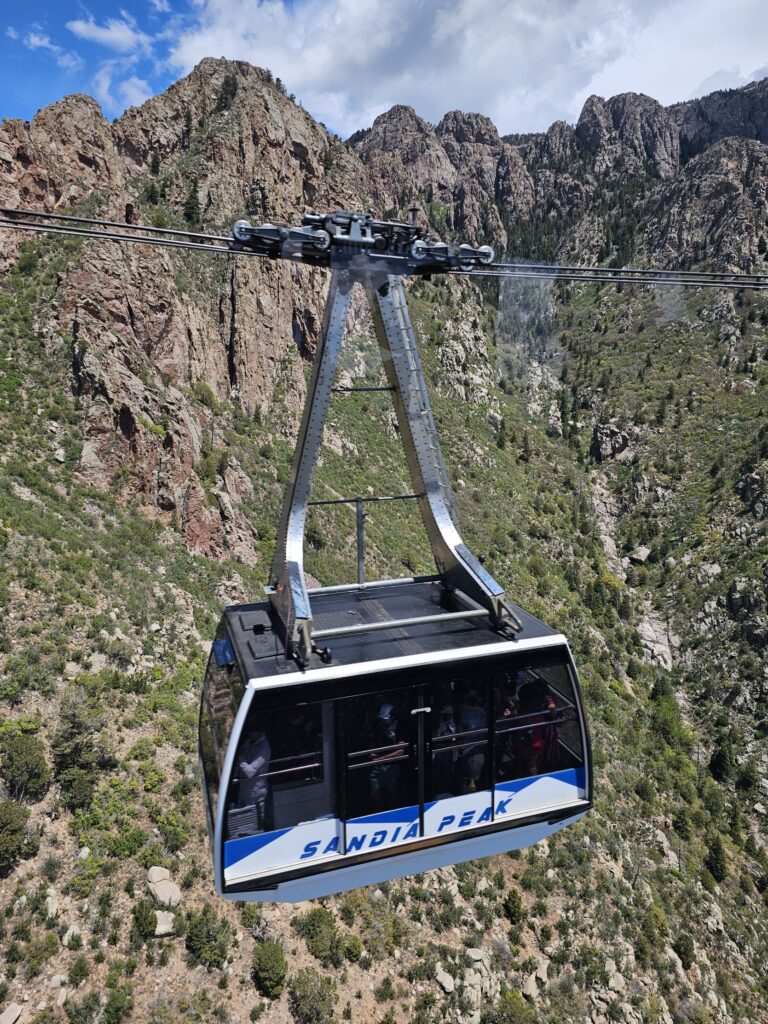
We waited for what seemed like ages for our turn on the tram, but once underway, the views were spectacular.
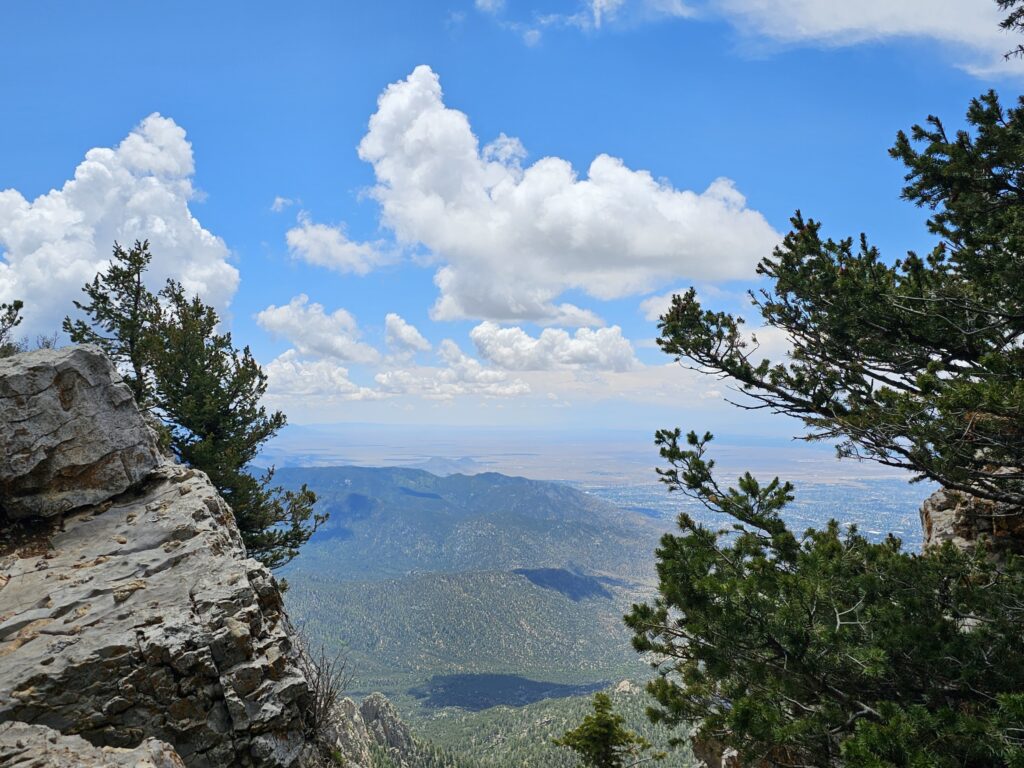
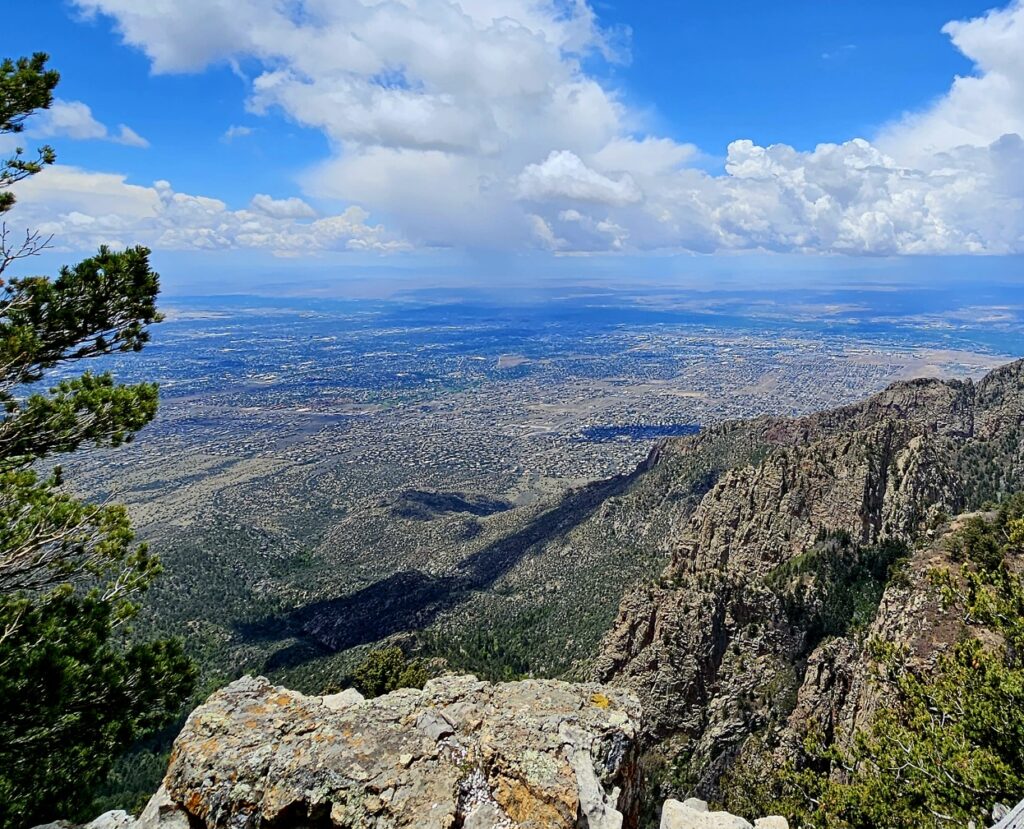
At the crest station, we hiked a short trail and saw fossils of ancient sea life embedded in the rocks near the trail.
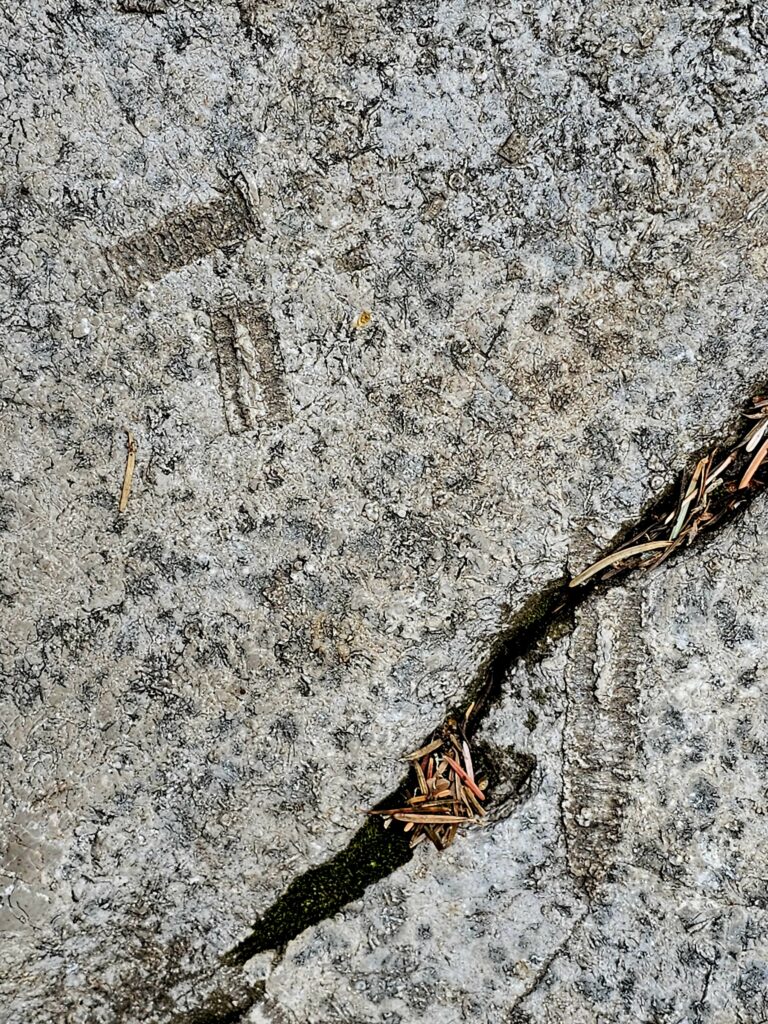
It’s always mindblowing to remember that, many eons ago, these mountains were underwater. An approaching thunderstorm chased us on our ride back down the mountain, but the advancing dark clouds made it all the more dramatic.
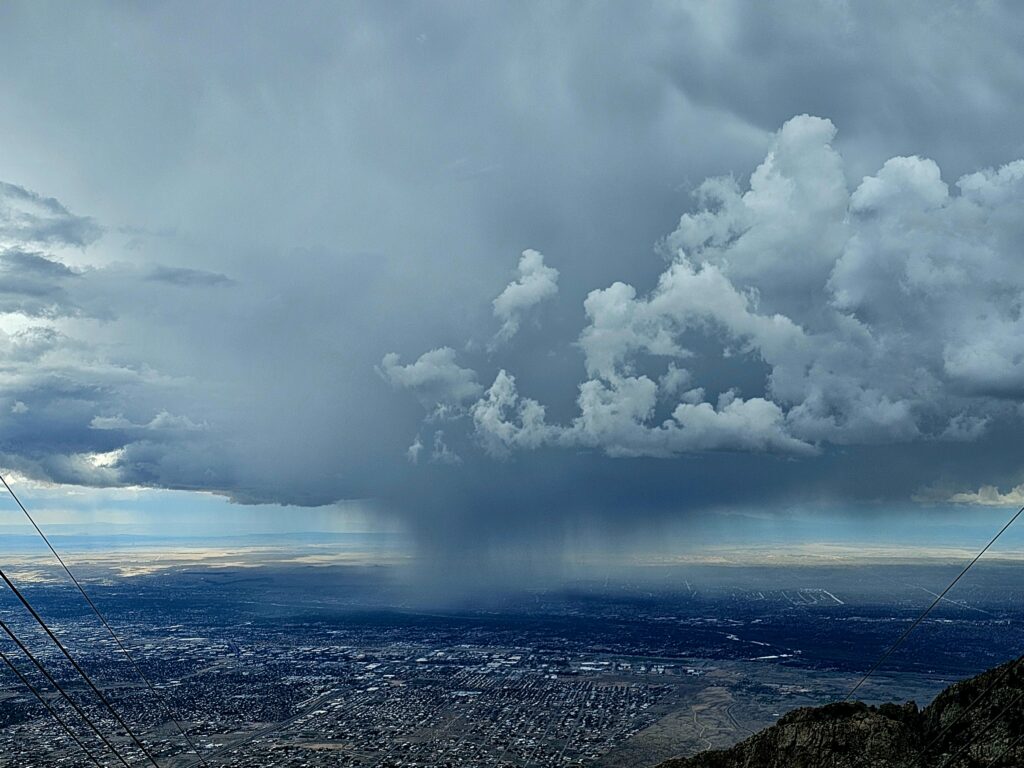
Cochiti Pueblo, New Mexico
We stayed near Santa Fe at Cochiti Recreation Area, a campground managed by the Corps of Engineers.
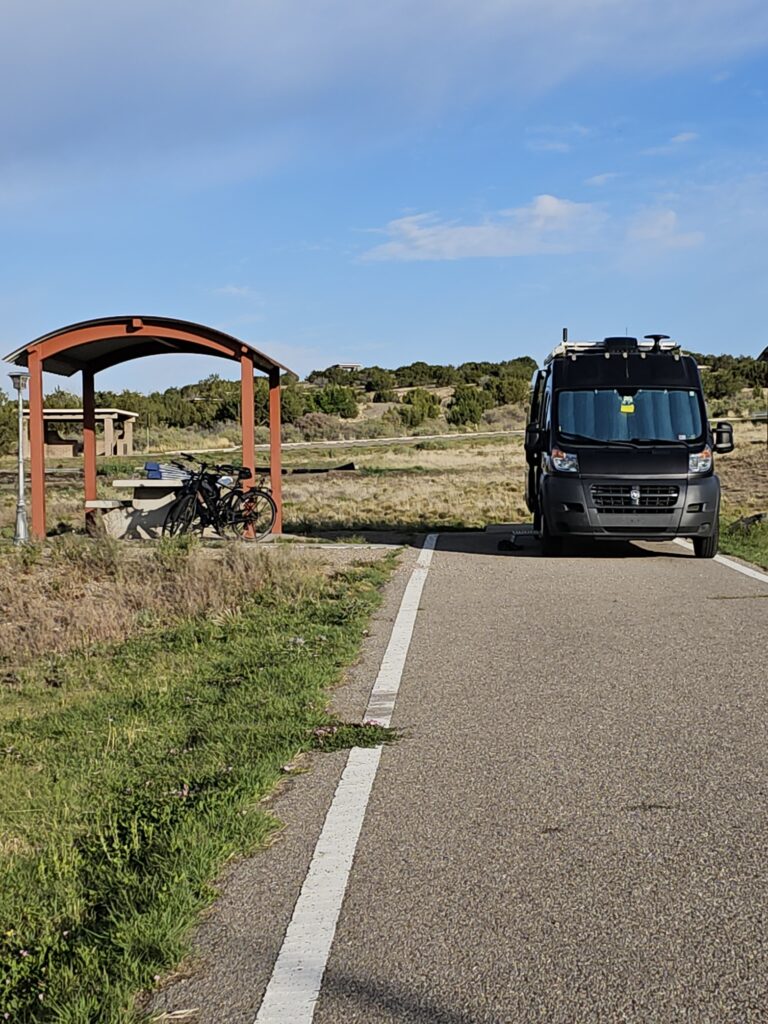
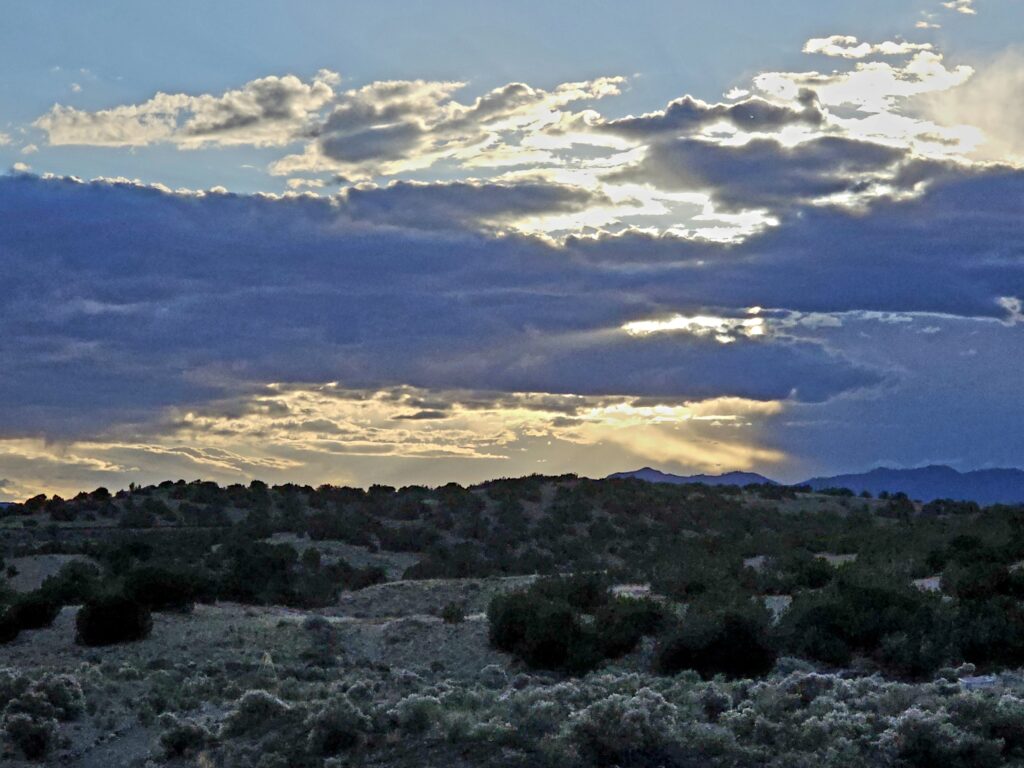
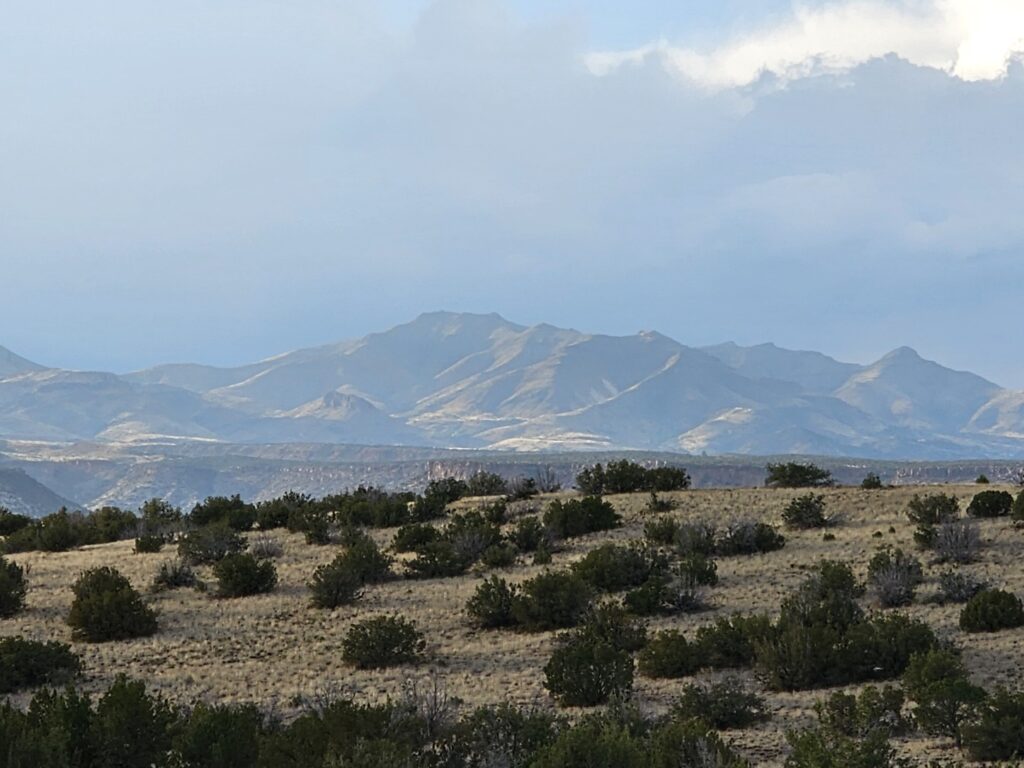
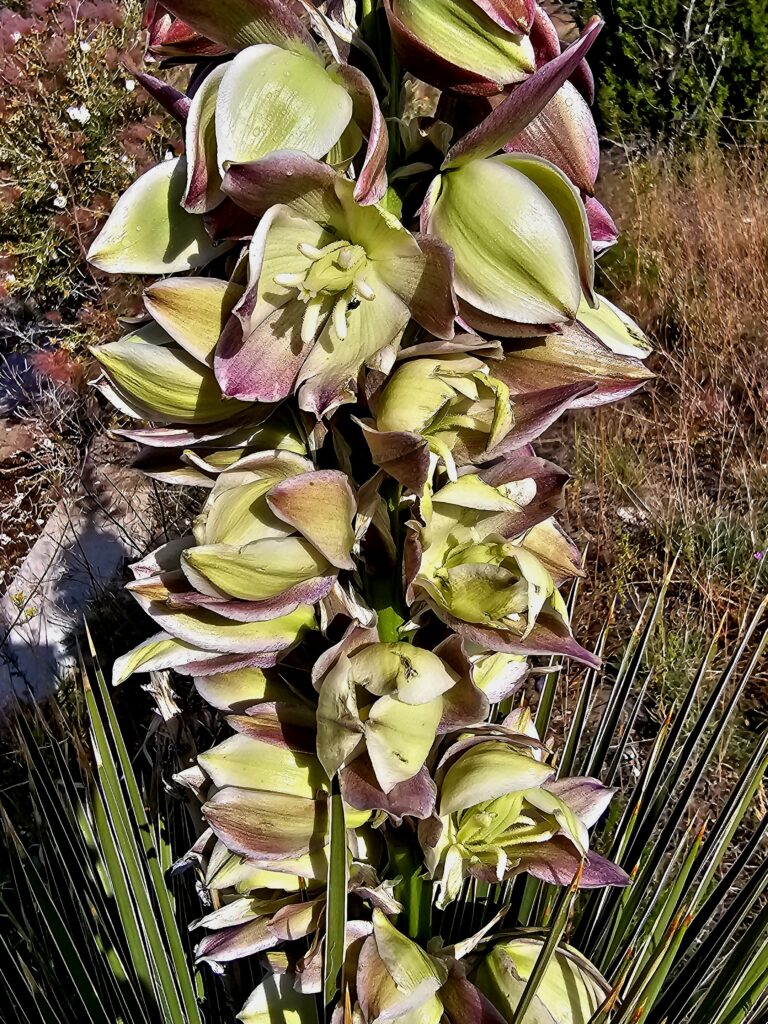
The Cochiti Lake, like many of the New Mexico Lakes, has been inundated by melt from winter snows and rains. No more excess water can be released into the Rio Grande right now – or properties downstream would flood. So, they are waiting for the waters to recede. Our campground on the hill was unaffected, but the swim beach was underwater.
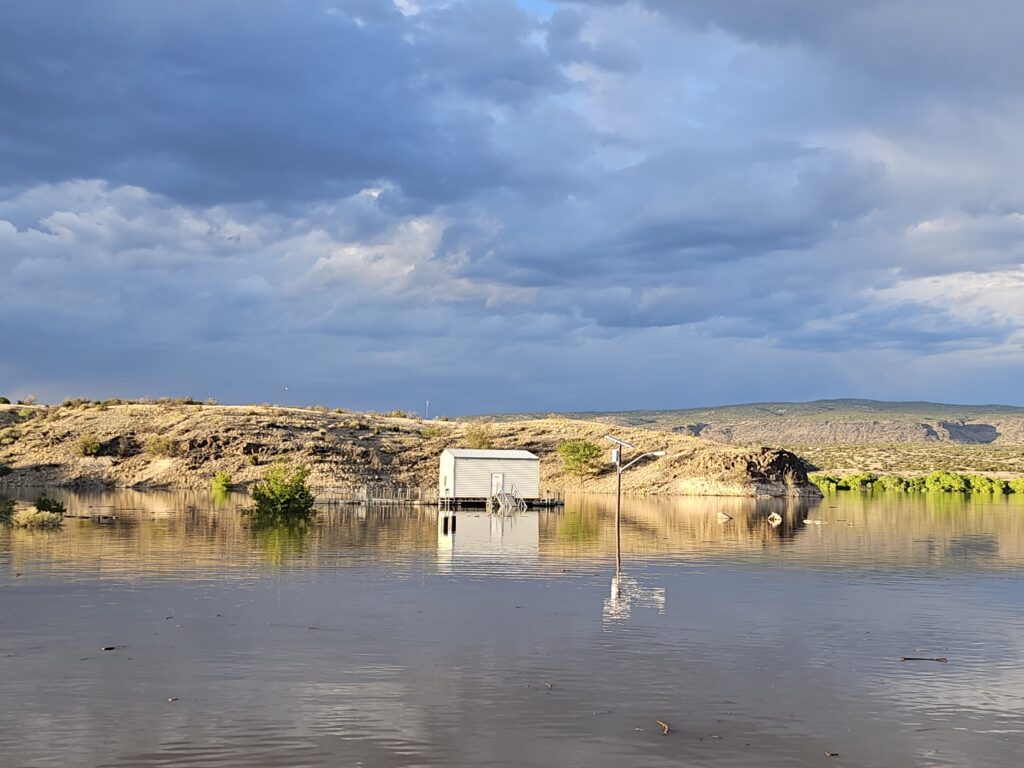
Jemez Springs, New Mexico
We made a day trip to Jemez Springs, where John lived once upon a time. The scenery and mountains are magnificent. The red rock against a blue sky is stunning.
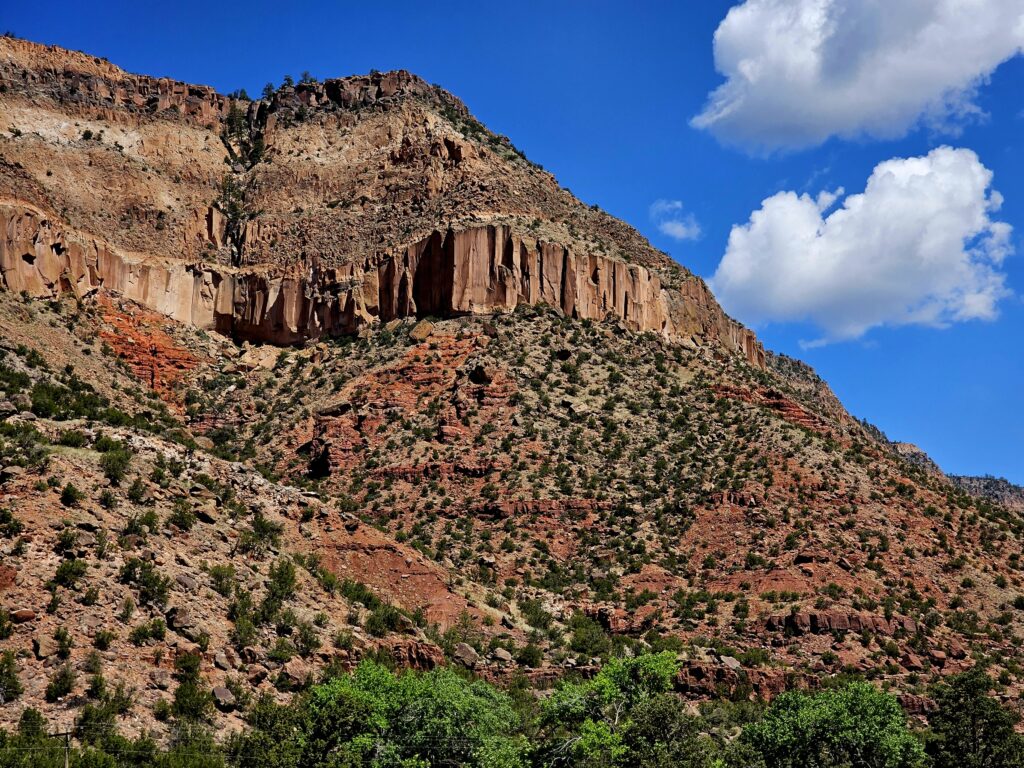
We hiked a mountain trail along the Jemez River, viewed Jemez Soda Rock, and had lunch at Los Ojos Restaurant and Saloon.
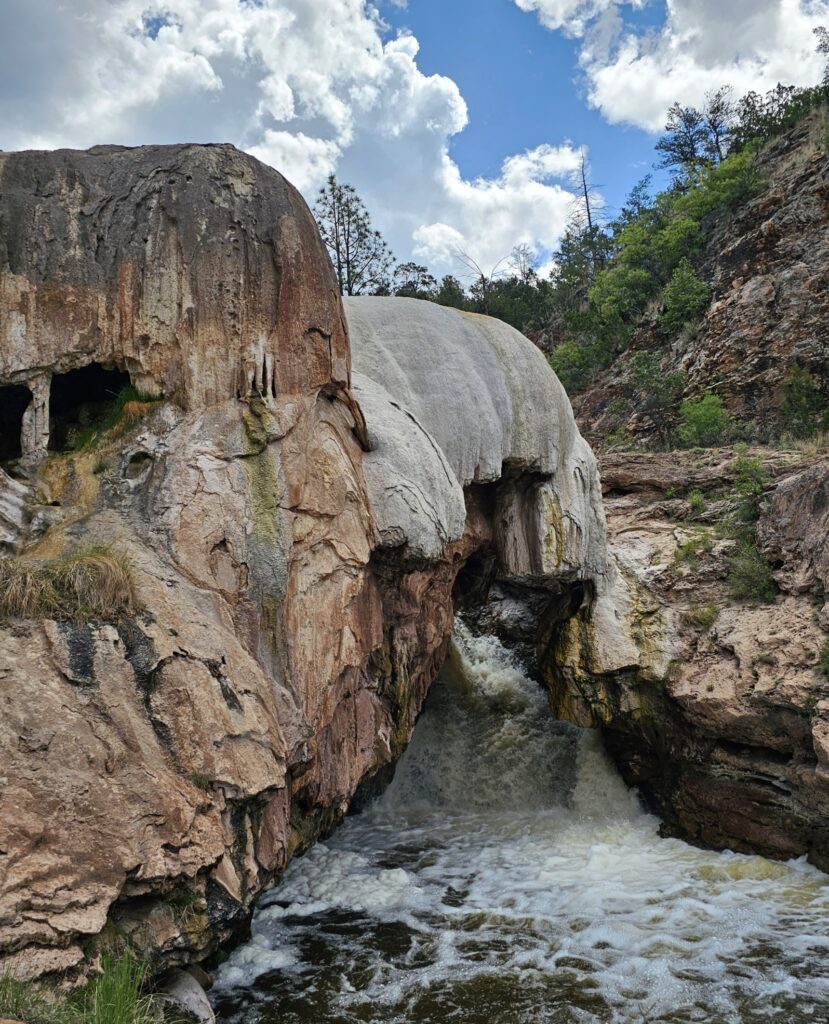
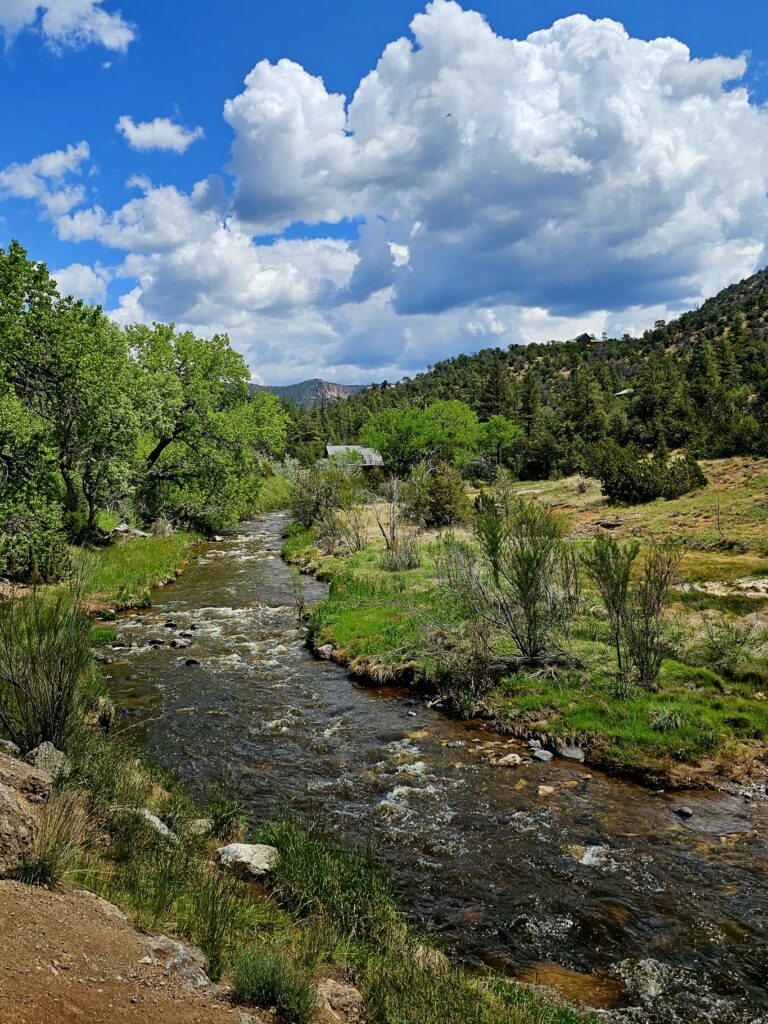
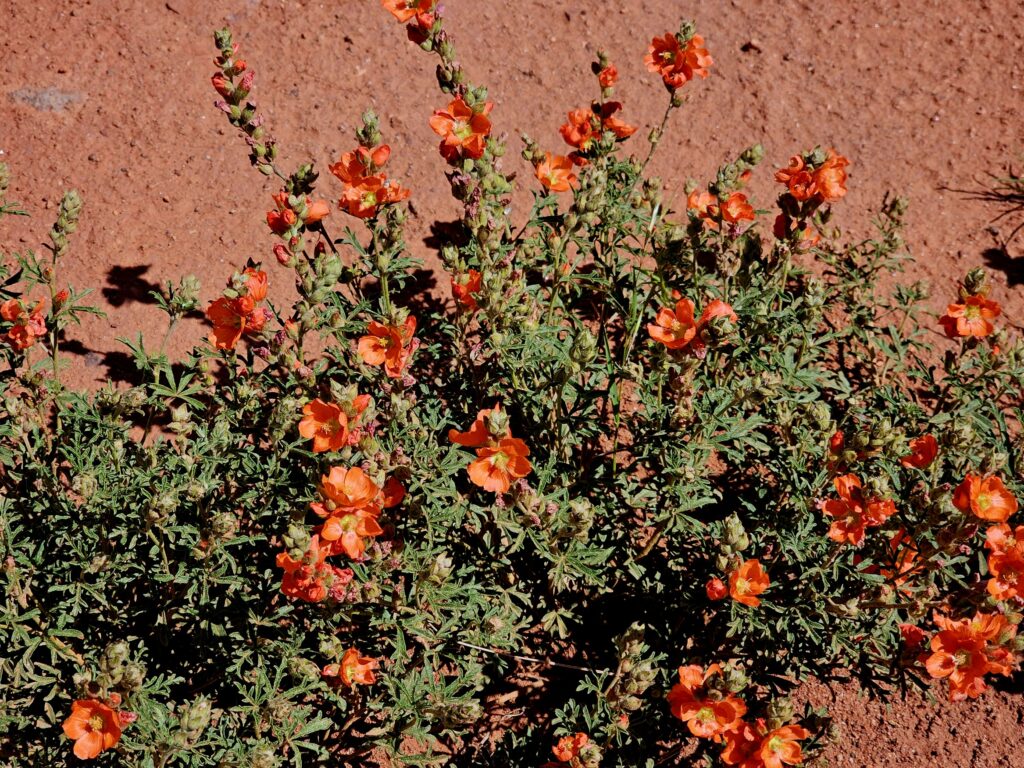
Los Ojos is a historic spot for great Mexican specialties. For 75 years, it’s been the community watering hole. (Actually, for years, it was the only watering hole.) It’s dark inside – you need to give your eyes time to adjust – and then you settle into the atmosphere.
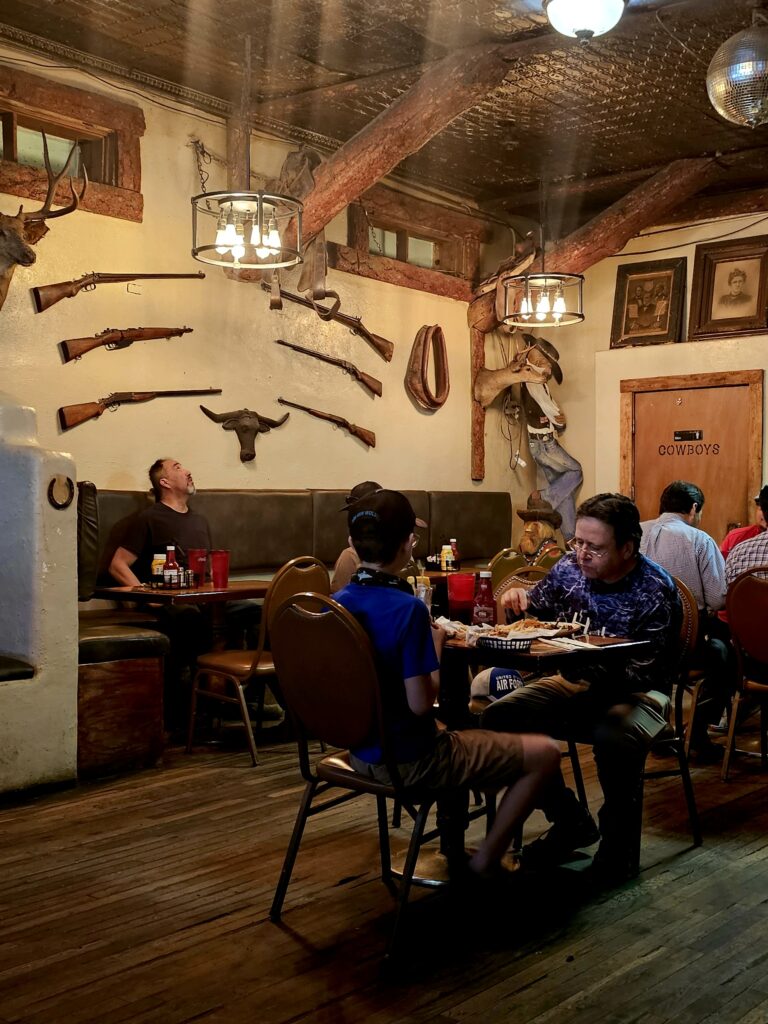
The walls are decorated with rifles, saddles, and bison heads. Jemez is still a small town; there are fewer than 300 year round residents. The TV over the bar was tuned to the Cowgirl Channel. (I think that’s new…fun to watch) It was such fun having John as my personal guide to his old stomping grounds.
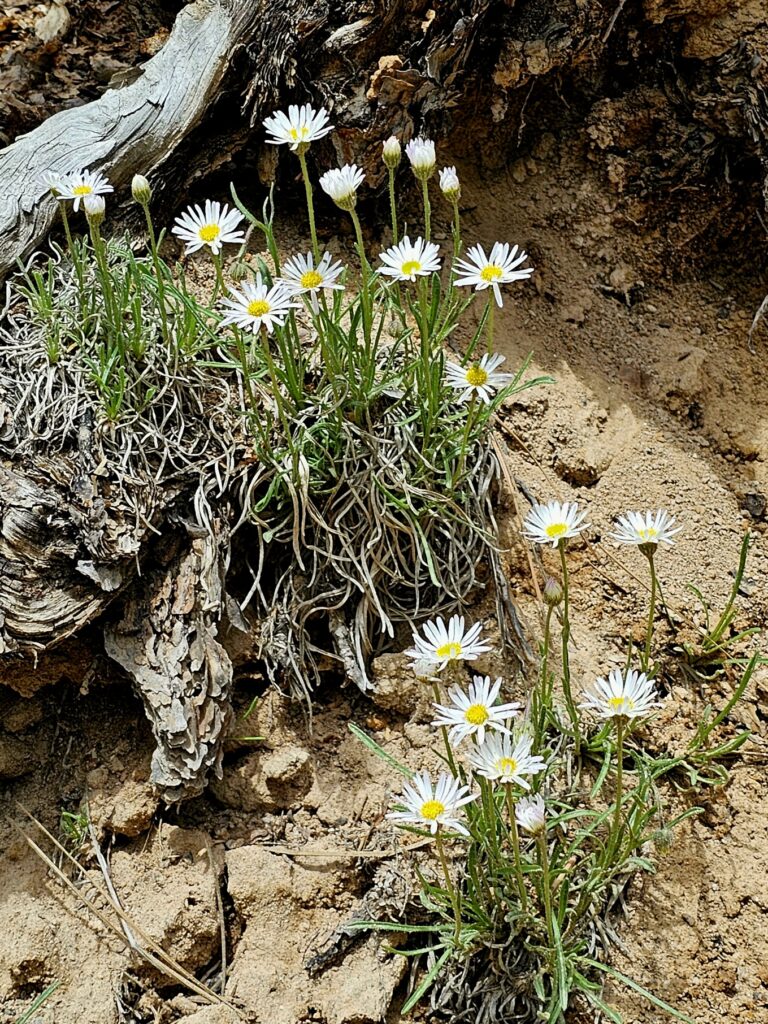
Los Alamos, New Mexico
We had an interest in seeing the Los Alamos Laboratory, but the actual labs are off-limits to casual visitors. Guided tours are only offered three times yearly.
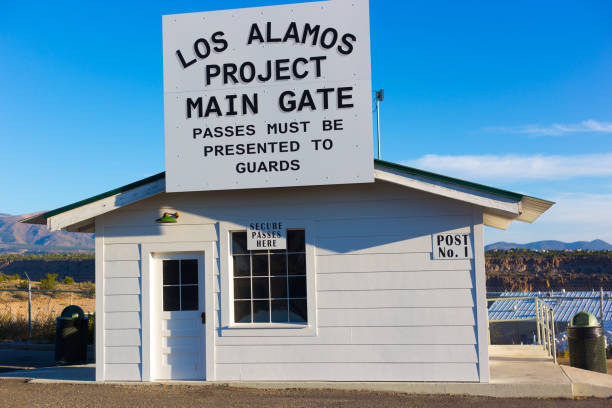
However, the Bradbury Science Museum in Los Alamos is open and free. It tells the story of the the nuclear arms race. It details the Manhattan Project, the building of the WWII bombs that were dropped on Hiroshima and Nagasaki. It also shares the personal stories of the scientists and teams that supported this effort.
At the peak of production, more than 6,000 people lived in Los Alamos, in support of this project. Many stayed on and became the nucleus of this vibrant community.
The museum also showcases the modern day uses of nuclear science – medicine, bio-fuel production, and peace time energy.
But the labs main purpose is to provide scientific and engineering support to national security programs. They monitor nuclear developments around the world and help our country maintain a deterrent presence. So much goes on behind the scenes…
Riana Campground, Abiquiu Lake, NM
We booked this campground north of Santa Fe on a whim when our plans changed unexpectedly. What a lucky find! Great campground with terrific views! Stayed here one night on our way to Taos.
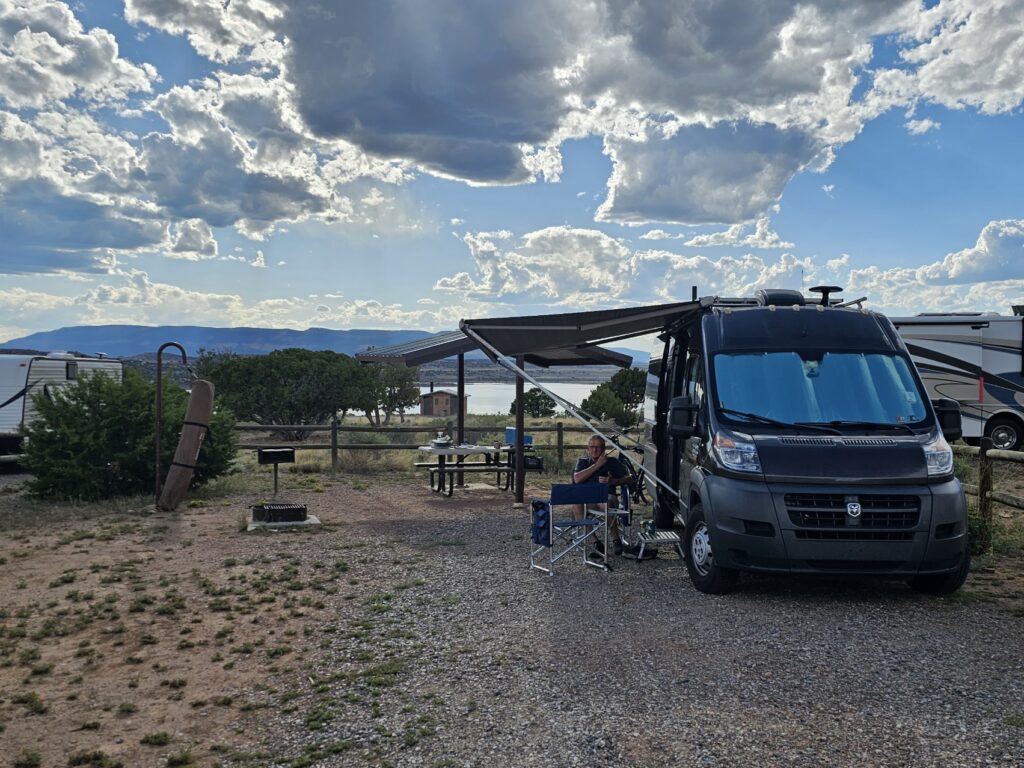
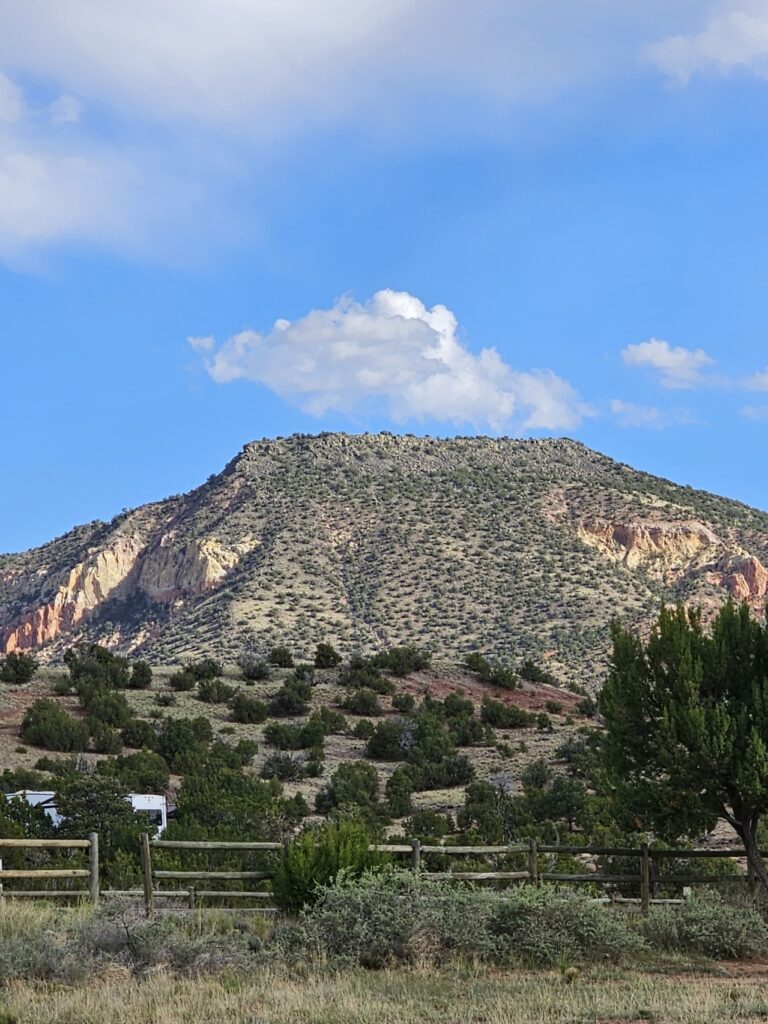
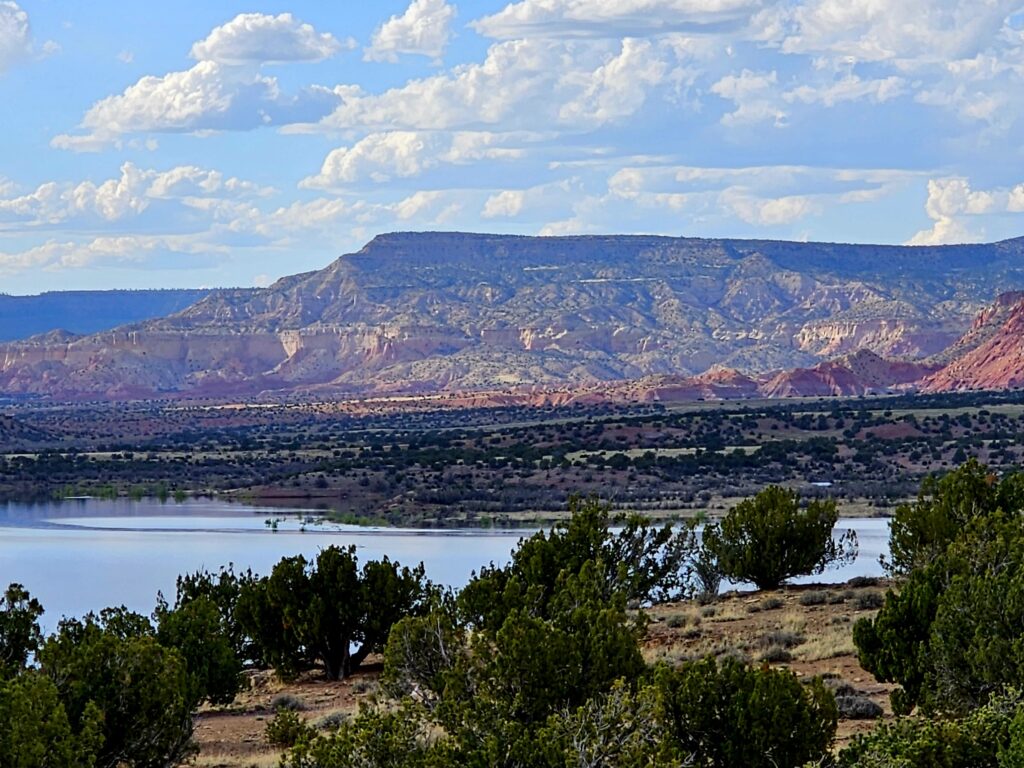
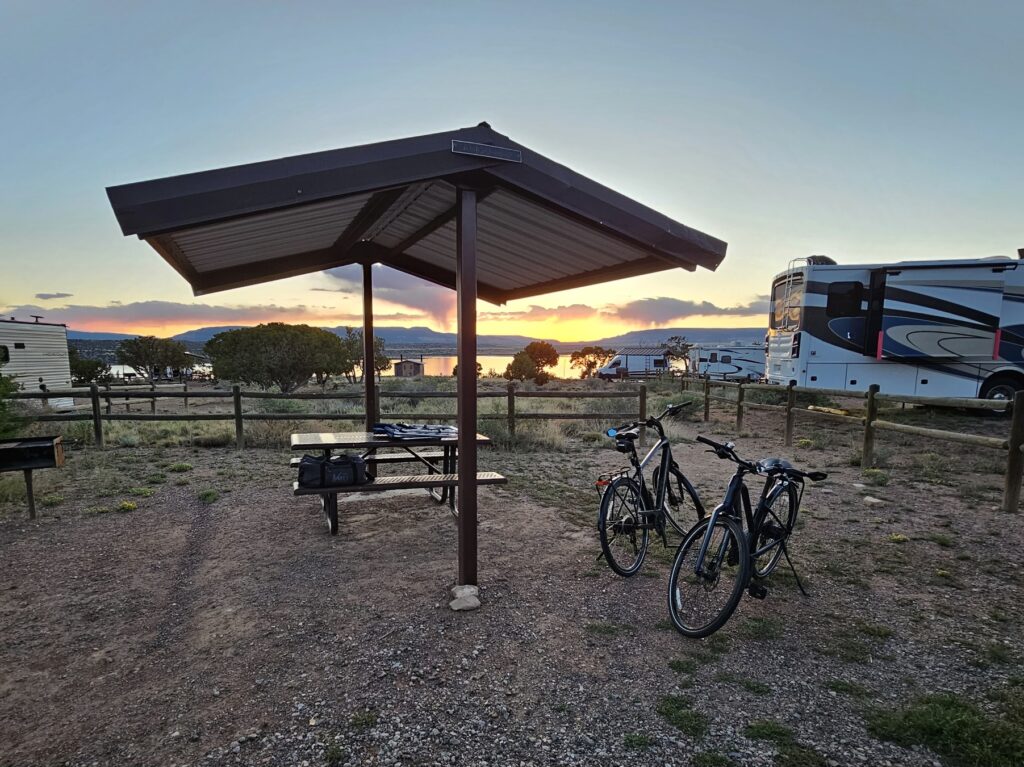
Taos Pueblo, Taos, New Mexico
A World Heritage Site, the Pueblo has been inhabited for more than 1,000 years. Visitors are invited to see the ancient church and walk the streets of the Pueblo.
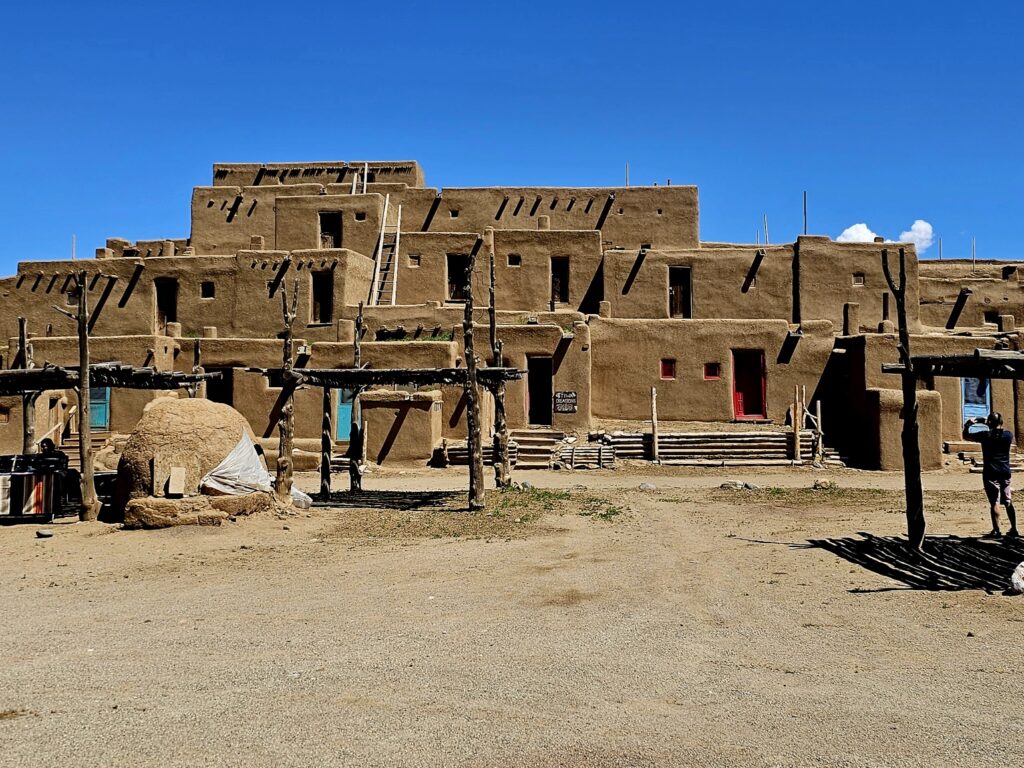
To be honest, this experience was a bit underwhelming. The church is absolutely beautiful.
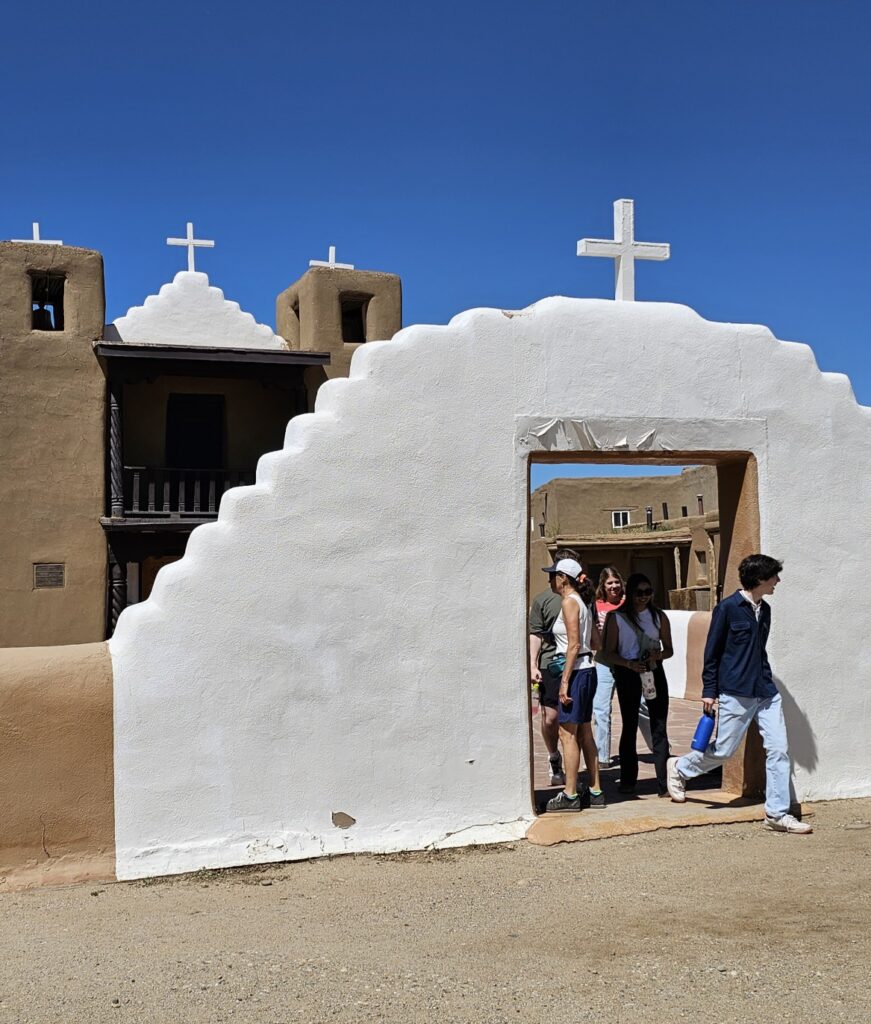
Very pink, with murals and stained glass. (No photos allowed) One of the prettiest churches we’ve seen traveling in the southwest. But, we walked all the available streets, saw some shops, and were finished in less than an hour. For the price of admission, ($25 each) it would have been nice to have some interpretive signage (there is absolutely none) for self-guiding.
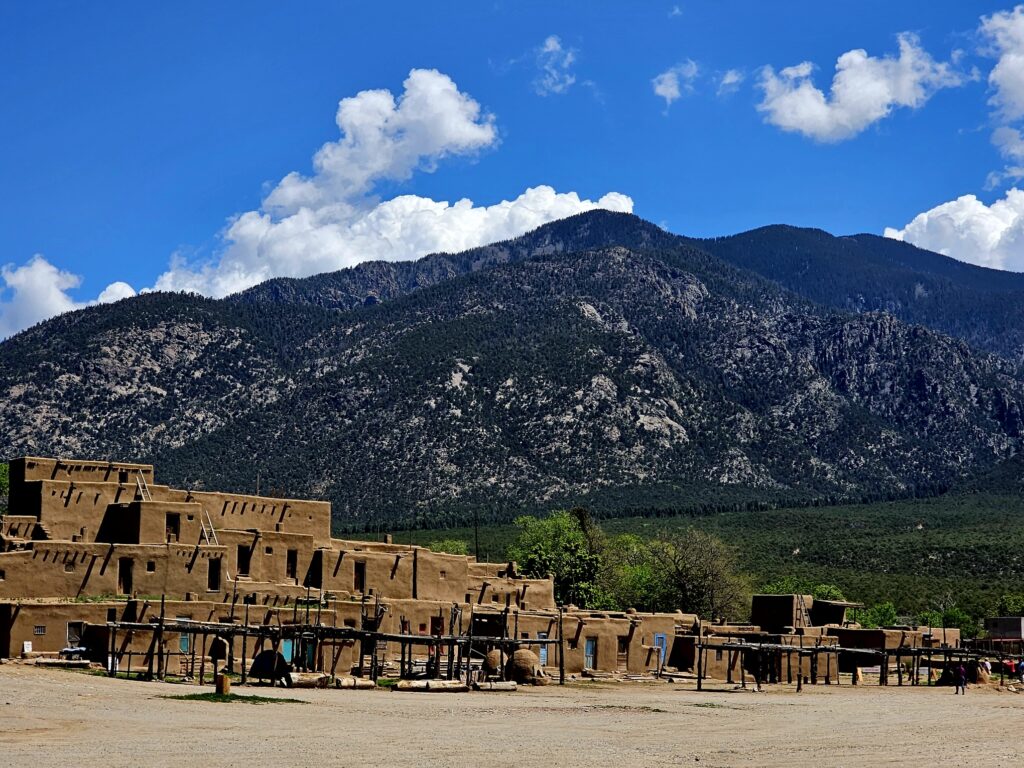
I guess I was kind of expecting Williamsburg West, with craft demonstrations and people living as they did in earlier times. But the community feels hollow; no farm animals, gardens, or demonstrations. Just folks selling tables of jewelry, small pottery pieces, and baked goods for busloads of tourists.
There are some guided tours, but the timing didn’t work for us. I’m really not sure I would recommend visiting here the way it is currently.
Colorado Springs, Colorado
We landed in Colorado Springs on the weekend of Territory Days Celebration. The main street of town was closed to traffic and filled with music, craft vendors, food, and fun things to do.
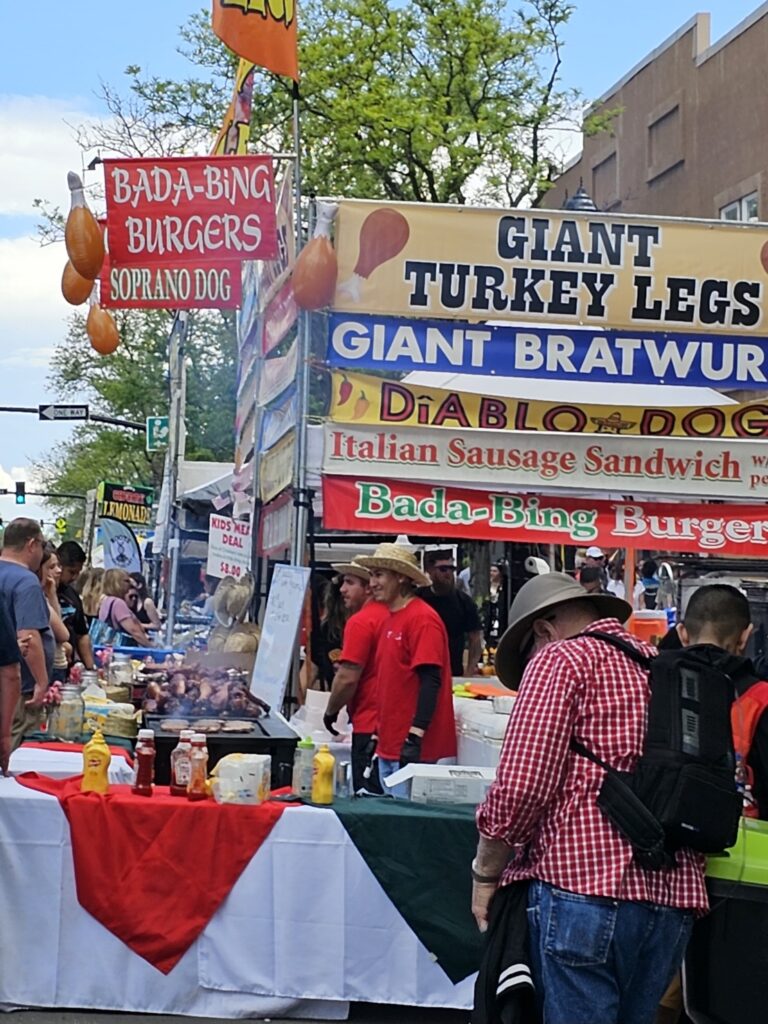
The local prospectors club had set up water tables and was teaching folks how to pan for gold.
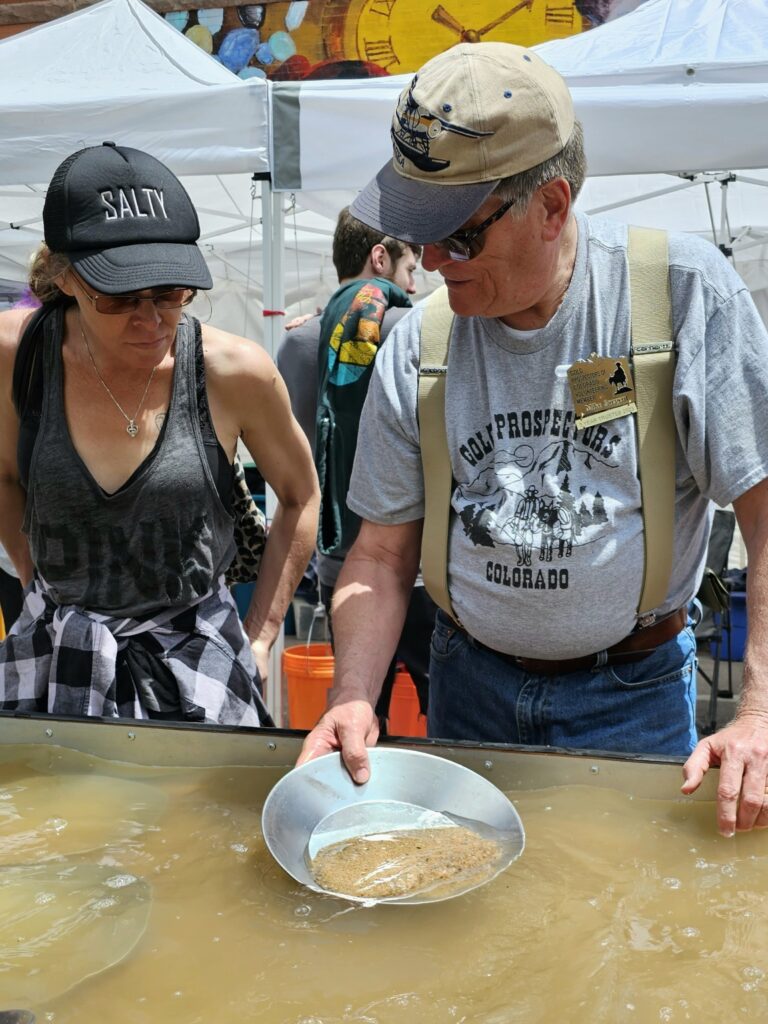
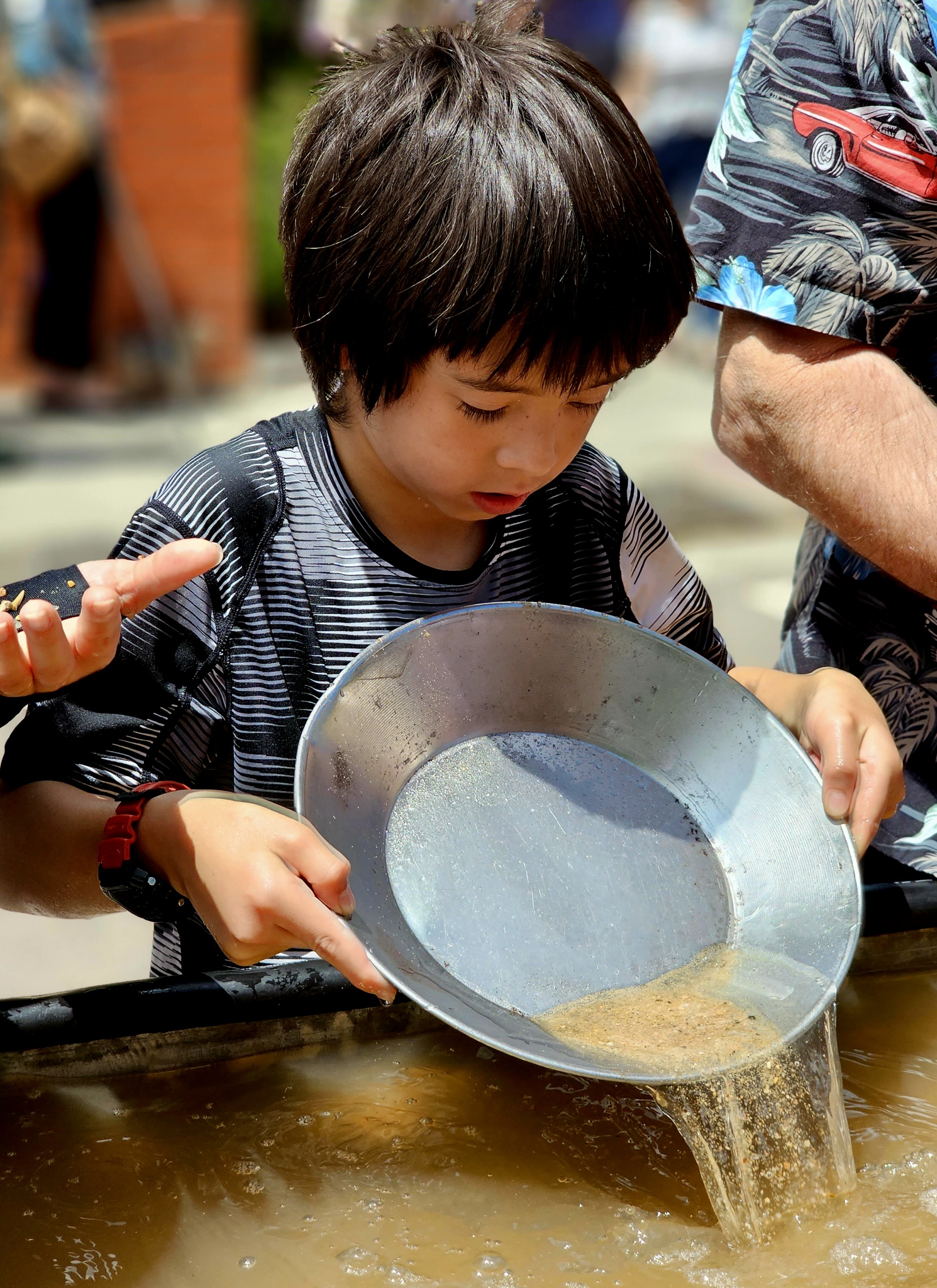
There were blocks of vendors selling wares: soaps, jewelry, spices, apparel, internet service, and cowboy hats.
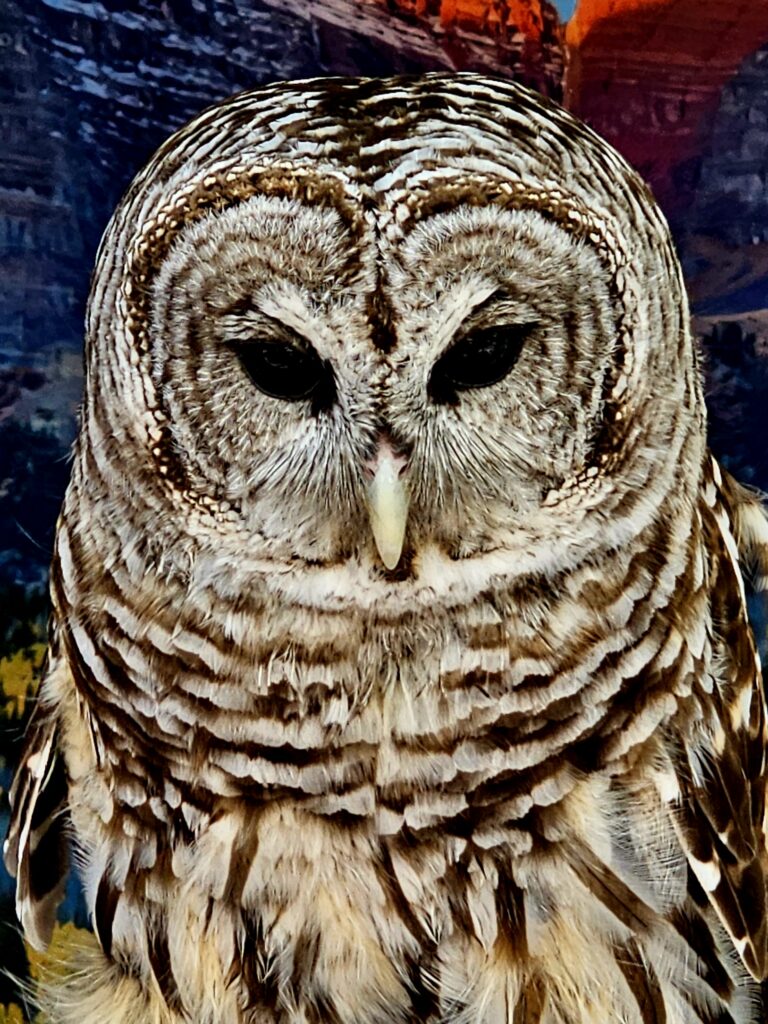
A rescue group was introducing visitors to raptors. I loved this owl!
Late in the afternoon, the skies darkened and, for ten minutes on an 80 degree spring day, it hailed. Life in Colorado…
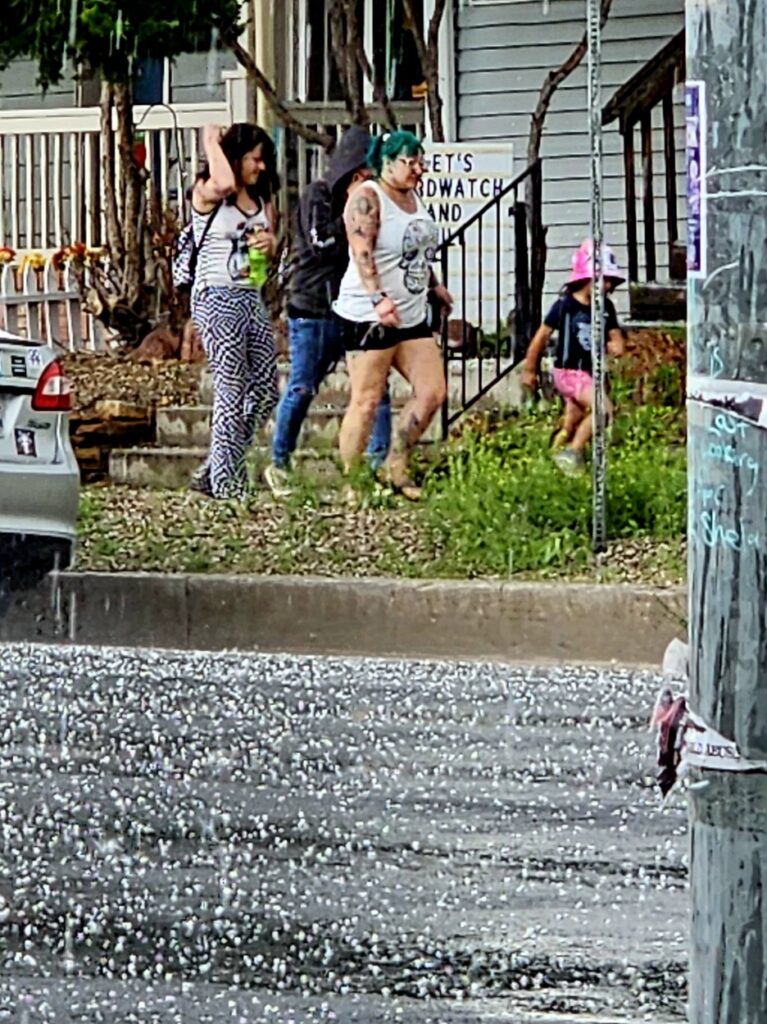
We stayed at Smiling Toad Brewery, just a few blocks away. It’s a sweet neighborhood taproom with good beer. The owner, Biff, is a great guy. Sadly for us, but good for him, he’s retiring after 10 years of brewery production.
The place has a real neighborhood vibe, and you could tell folks were sad that this was the last week of operation. We’ve called our van ‘The Toad’, so this was special for us. It made our trip to Colorado Springs even more special.

Before we headed on down the trail, we spent a morning at Garden of the Gods, a great park in Colorado Springs.
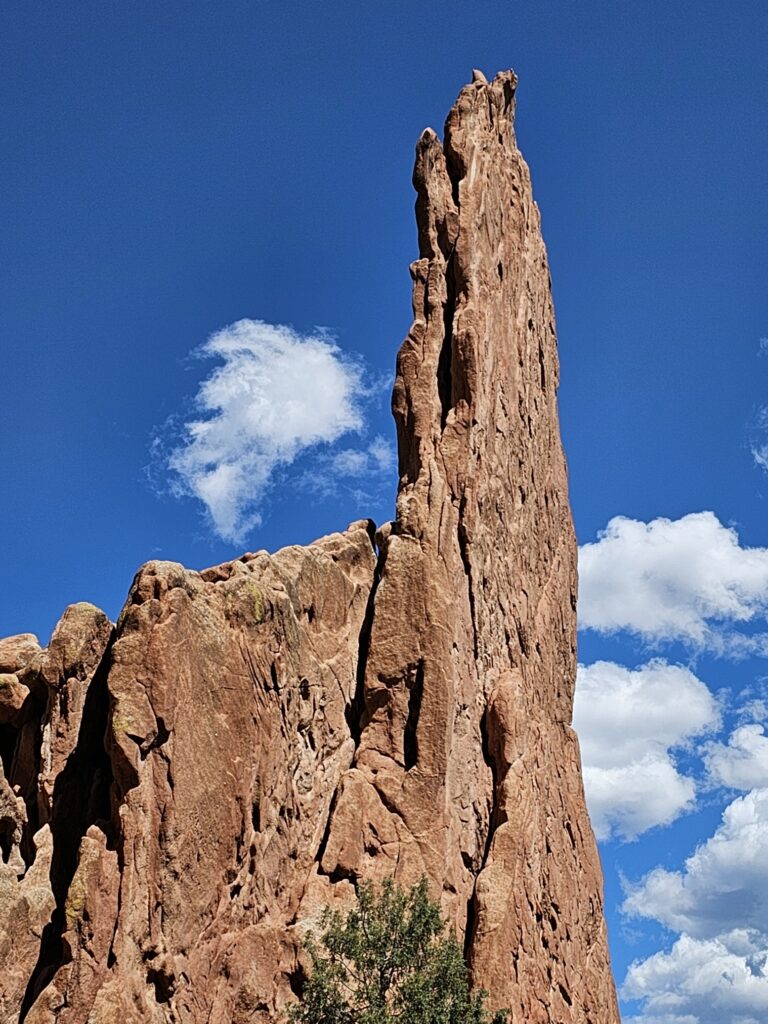
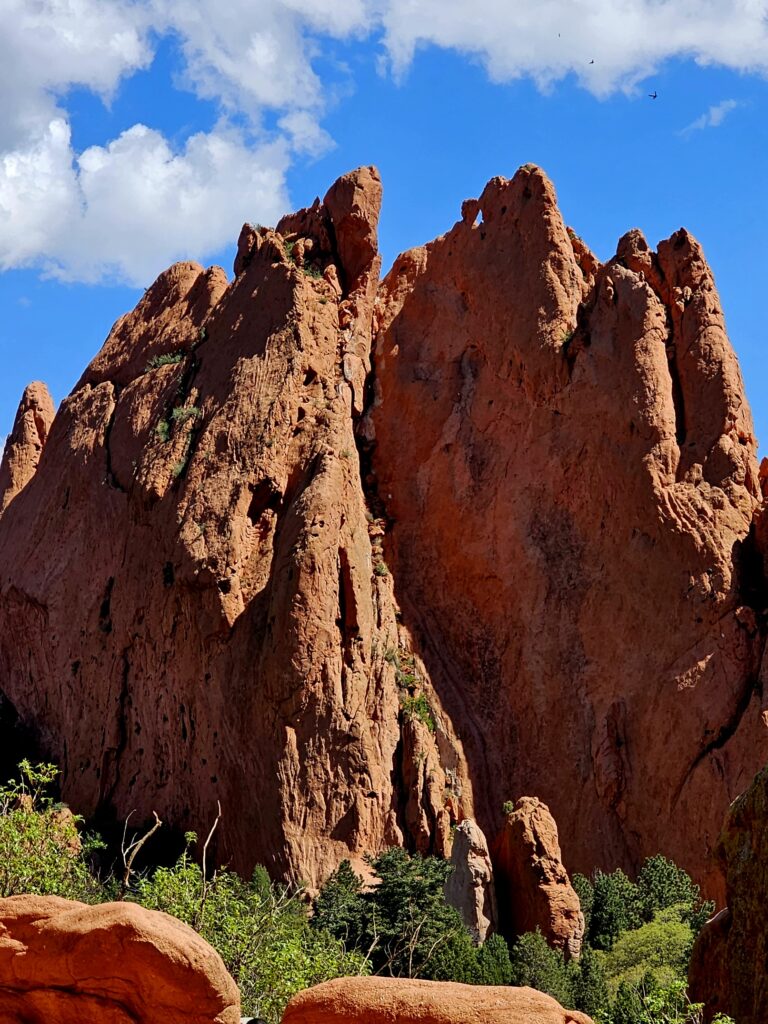
The park was generously gifted to the town, and remains free for all to enjoy. The wonderful rock formations – both in color and shape- are a forecast of the adventure that lies ahead of us.
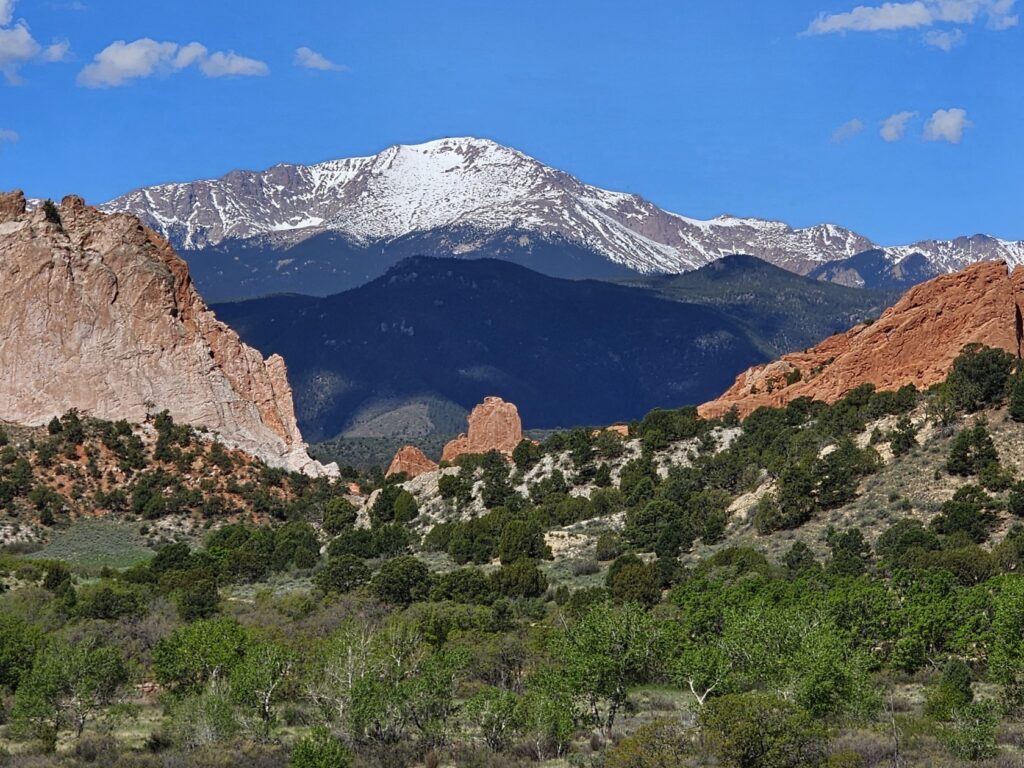
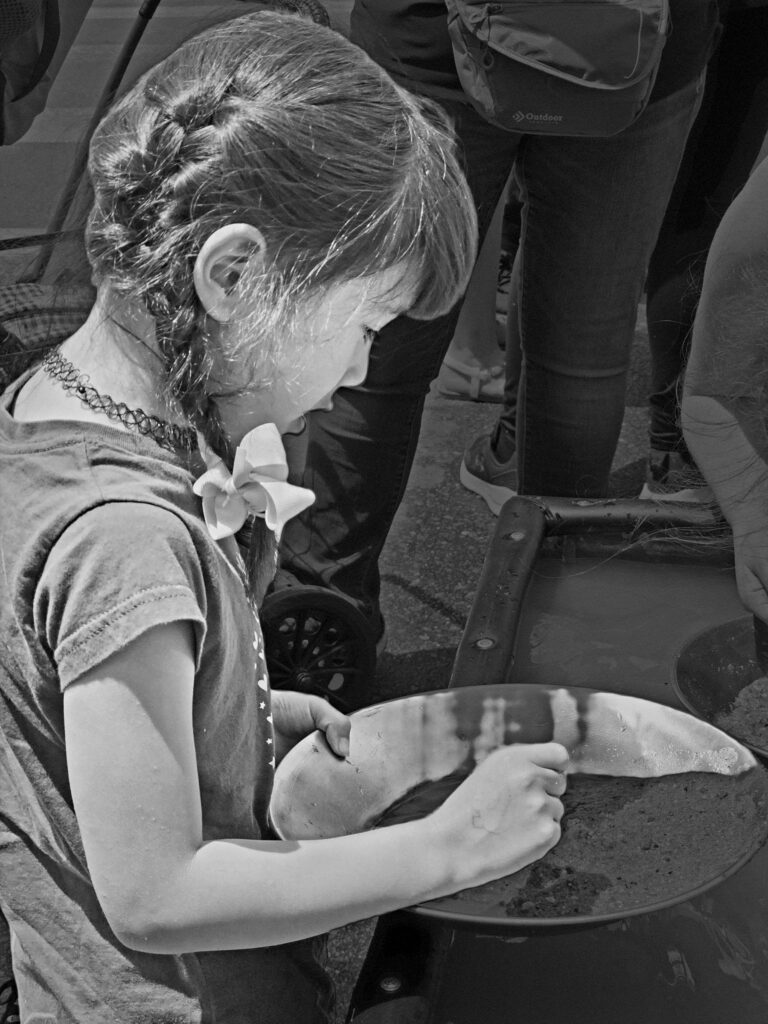
Looking forward to heading further west and seeing what treasures await!
2 thoughts on “Westward Ho”
Hi guys, just read about your trip out west. Sounds like a good trip. Safe travels.
I love mountain laurel – one of my favorite plants growing up in Connecticut. It is the state flower there.
Wow – so many beautiful skies and horizons where ever you were on this part of your journey!
Comments are closed.